Matador Network's Blog, page 499
April 7, 2022
Escape To These Dreamy Gatlinburg Airbnbs High in the Smokies
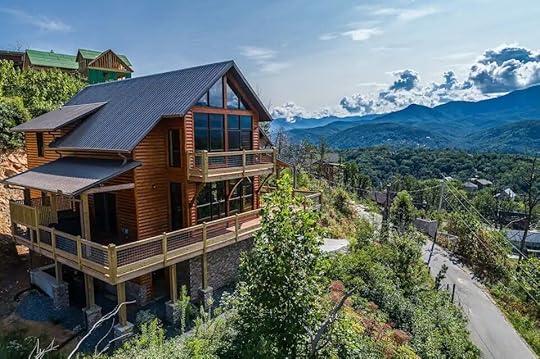
Swap skyscrapers for mountains with a cozy getaway to the Smoky Mountains. Gatlinburg, Tennessee, is bursting with cabins, chalets, and lodges where you can unwind without sacrificing your home comforts. This is our pick of the best listings on Airbnb, Gatlinburg, for a dose of the àpres lifestyle whatever the season.
Gatlinburg Airbnbs with best mountain viewsDowntown Gatlinburg AirbnbsDreamy cabins unique stays for couples and groupsWe hope you love the Airbnb Gatlinburg rentals we recommend! Just so you know, Matador may collect a small commission from the links on this page if you decide to book a stay. Listed prices are accurate as of the time of publication. See our full Advertiser Disclosure here.
Gatlinburg Airbnbs with best mountain viewsNorth Skyline Chalet
Photo: Airbnb
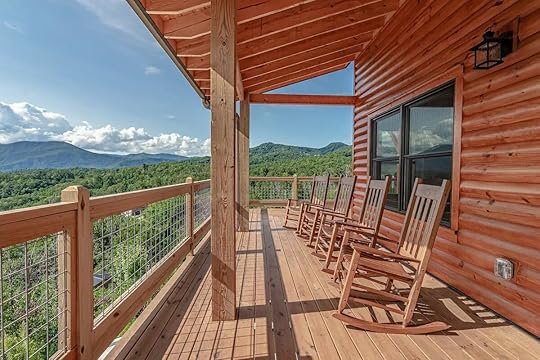
Photo: Airbnb
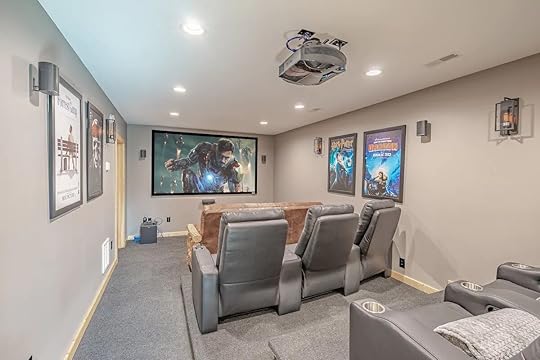
Photo: Airbnb

Photo: Airbnb
Located in the desirable Chalet Village North, this Airbnb in Gatlinburg, TN, with hot tub, games room, and movie theater is the full package. Generous use of windows and the mezzanine allows the natural light to channel through the space while offering incredible views of Mount LeConte and the Smokies. Families with younger kids will appreciate safety gates, high chairs, and children’s games provided by the host. A 5-minute drive downtown with endless hiking trails on the doorstep.
Eight guests, three bedrooms
Price: $500 per night
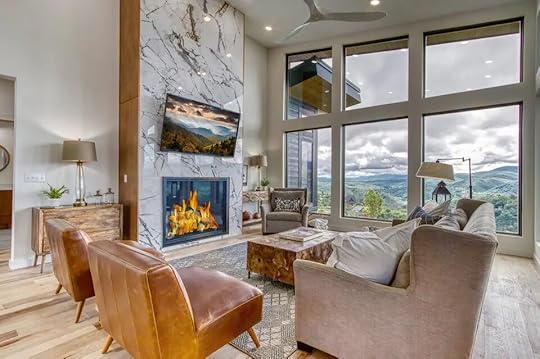
Photo: Airbnb
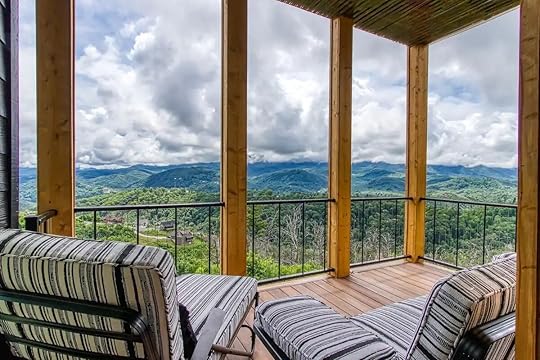
Photo: Airbnb
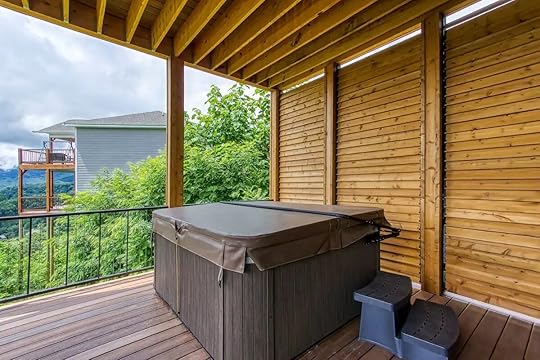
Photo: Airbnb
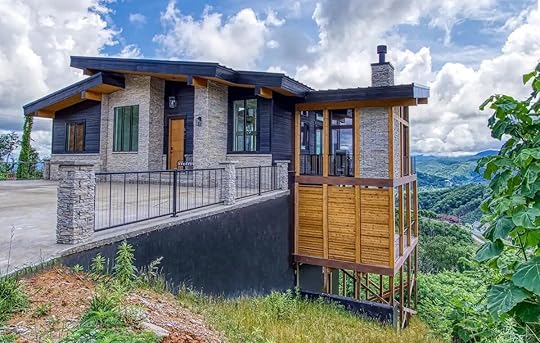
Photo: Airbnb
This stylish lodge in Chalet Village, Gatlinburg, marries modern-day luxury with a wild setting. The internal space is furnished with a sleek kitchen, deep soaking tubs, and limitless natural light courtesy of the massive windows. Each of the five bedrooms has an en-suite attached. Guests have seasonal access to the adjacent clubhouse facilities including a shared heated outdoor pool.
Twelve guests, five bedrooms
Price: $815 per night
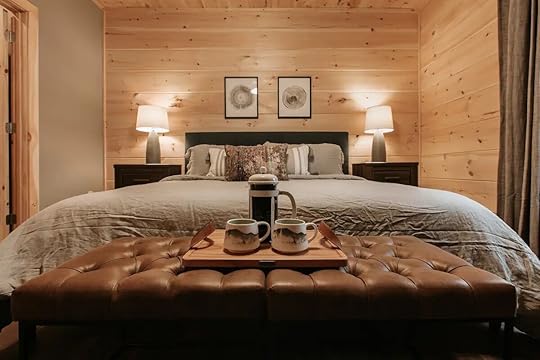
Photo: Airbnb
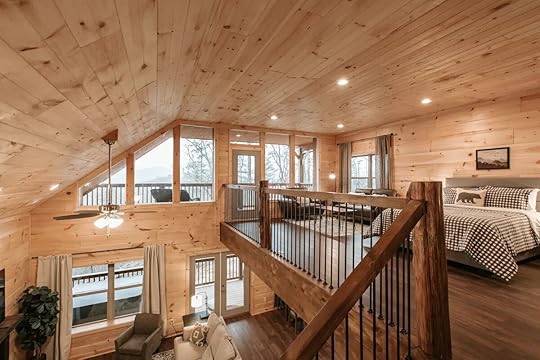
Photo: Airbnb
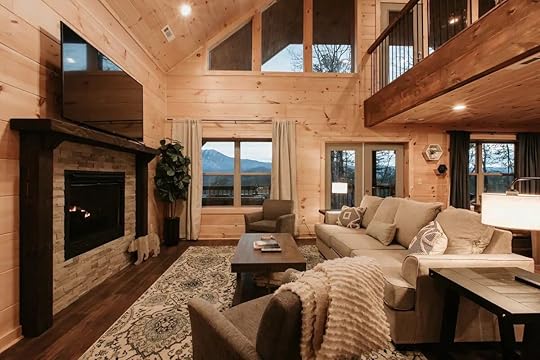
Photo: Airbnb

Photo: Airbnb
Situated 3 miles from downtown Gatlinburg, the Lookout Loft will captivate you with its thoughtful touches and gorgeous vistas across Mount Le Conte. The private spa and firepit in the backyard are there to keep you toasty on a chilly evening in the mountains. We implore you not to bicker over who gets the loft bedroom with its attached balcony.
Eight guests, three bedrooms
Price: $270 per night
Traveling to Tennessee? Check out Matador’s top Tennessee accommodation guides:Gorgeous Tennessee Airbnbs across the state for your next southern roadtripThe best Airbnbs in Nashville for a bachelorette getawayThe 11 best Nashville Airbnbs by neighborhoodDowntown Gatlinburg AirbnbsBear Path
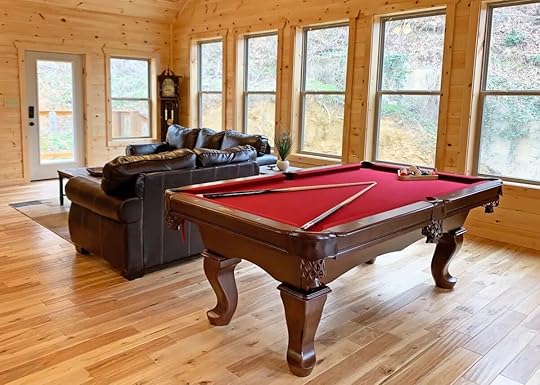
Photo: Airbnb
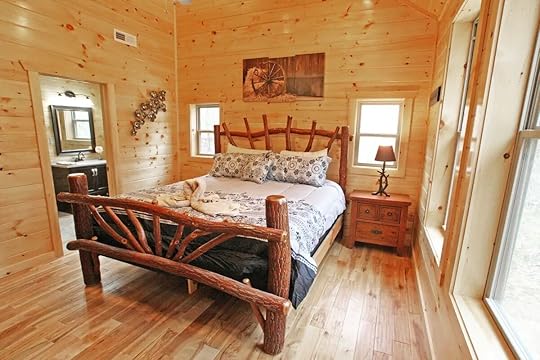
Photo: Airbnb
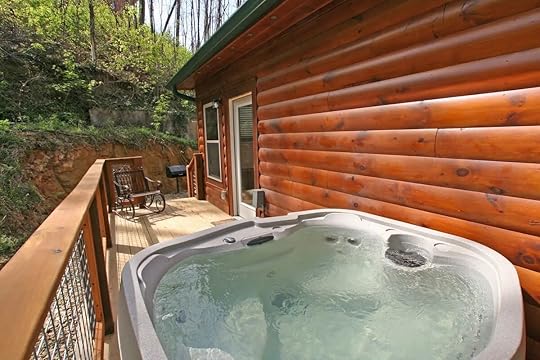
Photo: Airbnb
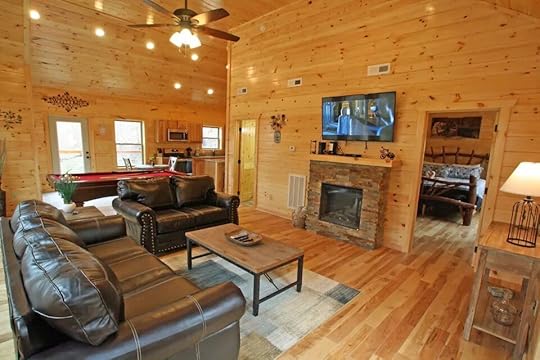
Photo: Airbnb
This Airbnb in Gatlinburg, TN, with hot tub is perfect for couples seeking a mix of peaceful seclusion and easy access to local attractions. The space comprises one bedroom and an open-plan living area complete with a pool table. Your private spa beckons on the balcony where you can drink up the woodland views and shake off a day of hiking or skiing.
Four guests, one bedroom
Price: $200 per night
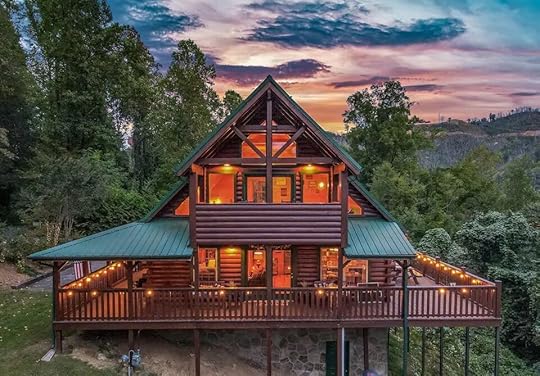
Photo: Airbnb
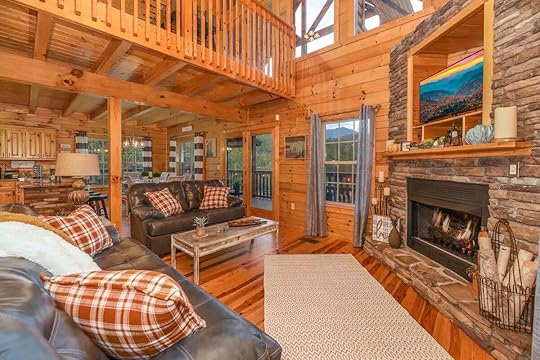
Photo: Airbnb
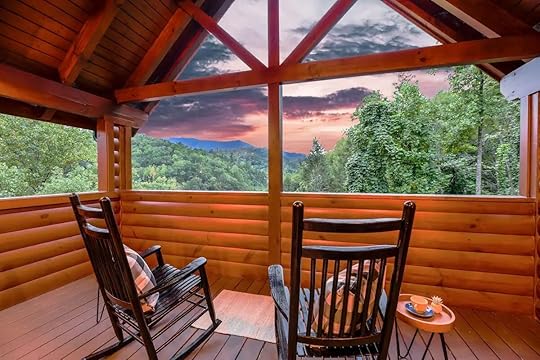
Photo: Airbnb

Photo: Airbnb
This downtown Gatlinburg Airbnb hands you the best of both worlds: supreme lodging among nature coupled with a walkable distance to the town center. Spacious interiors are perfectly matched with almost as much external space thanks to the huge wraparound terrace. The elevated location is ideal for taking in the surrounding mountain vistas and keeping a watchful eye out for local black bears. The loft offers infinite entertainment with a ping pong table, a foosball table, and a LEGO wall.
Eight guests, three bedrooms
Price: $540 per night
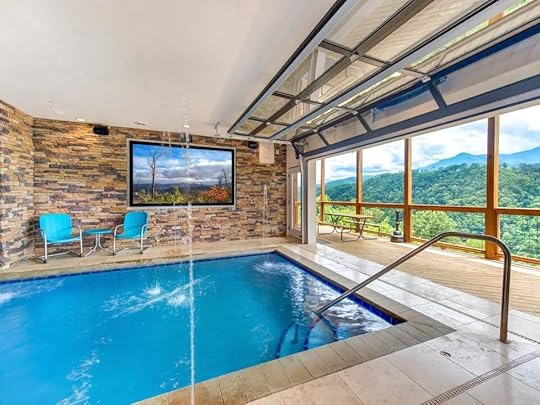
Photo: Airbnb
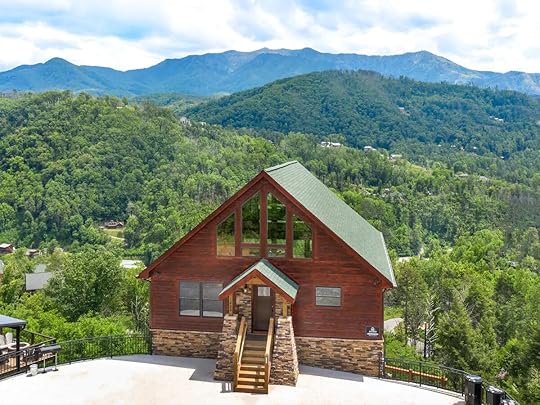
Photo: Airbnb
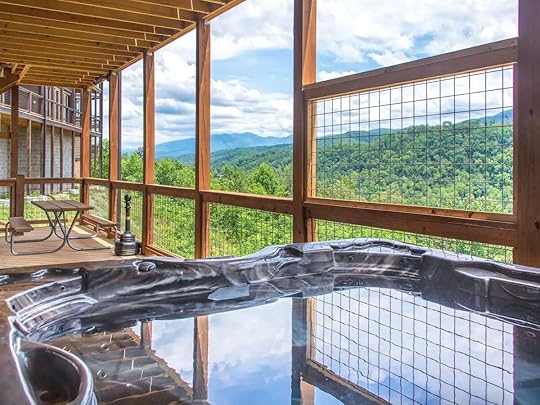
Photo: Airbnb
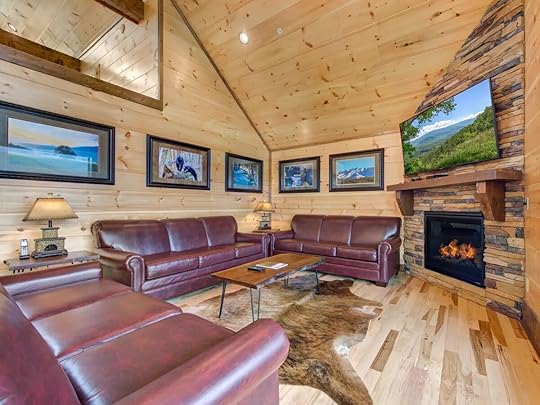
Photo: Airbnb
Furnished with an indoor pool, a games room, and a movie theater, you’d be forgiven for never leaving this top-of-the-line Airbnb in Gatlinburg. Savor the Smoky Mountain and Mount Le Conte views from the heated pool or slip into the hot tub on the balcony. Accommodating large groups and families, this brand new lodge is a short drive downtown.
16 guests, seven bedrooms
Price: $720 per night
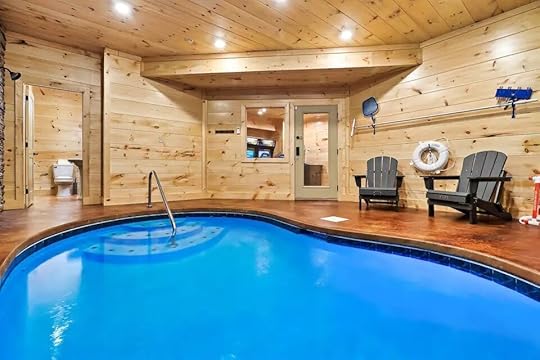
Photo: Airbnb

Photo: Airbnb
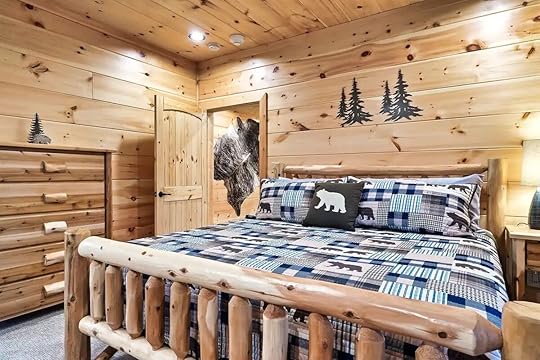
Photo: Airbnb

Photo: Airbnb
Vacation rentals with a private indoor swimming pool in Gatlinburg are hard to come by but Bear Moon Rising has you covered. This huge, three-story log cabin is rustically appointed with exposed woodwork throughout. In addition to the indoor, heated pool, Airbnb has two hot tubs. Once you tire of all the rest and relaxation, you can challenge your pals to snooker or a session in the arcade room. The cushy movie theater is perfect for Netflix nights.
Sixteen guests, six bedrooms
Price: $1,000 per night
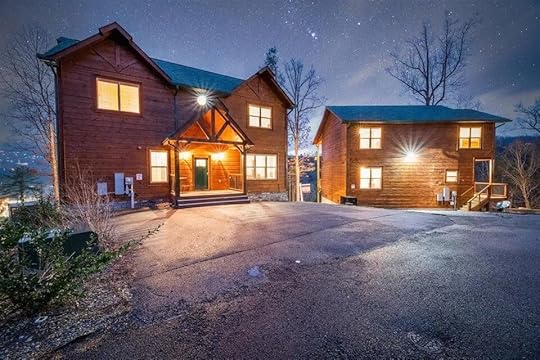
Photo: Airbnb
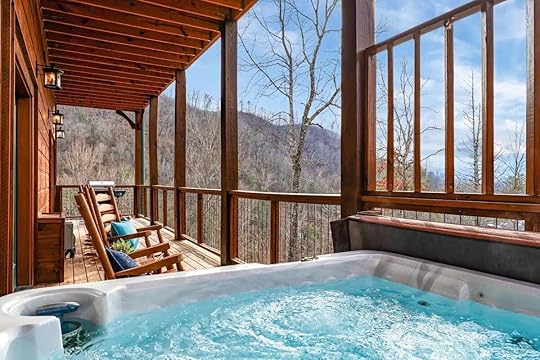
Photo: Airbnb

Photo: Airbnb

Photo: Airbnb
Sometimes, one luxury cabin in the mountains isn’t enough. This chic vacation home has two! Each unit consists of a lounge, kitchen, game room, and multiple bedrooms. While one cabin comes with a hot tub, the other features a supersized swim spa. These are positioned on the terraces to capitalize on the scenery. To top it all off, this duo of luxury Airbnb Gatlinburg cabins has two home cinemas.
Sixteen guests, ten bedrooms
Price: $1,100 per night
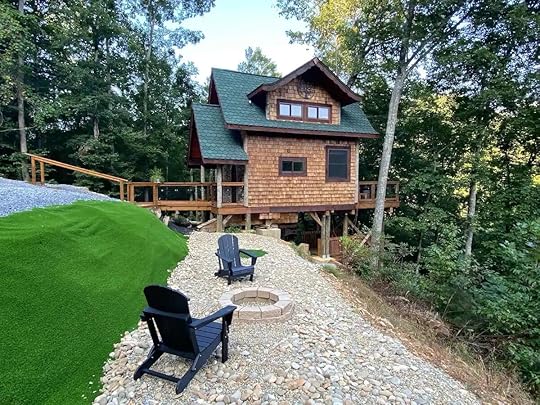
Photo: Airbnb
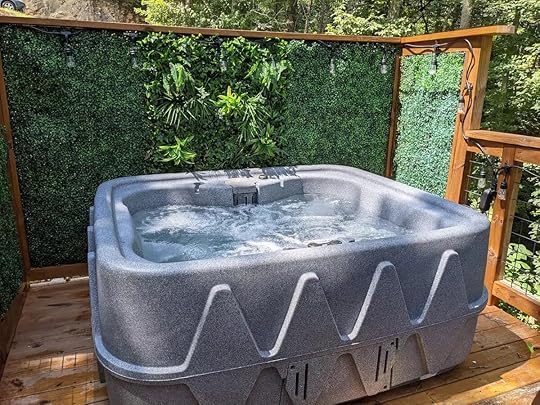
Photo: Airbnb
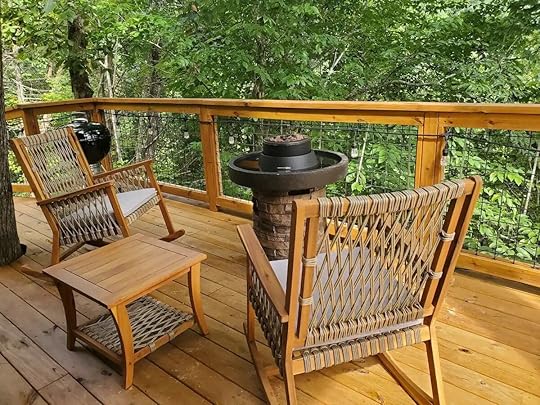
Photo: Airbnb
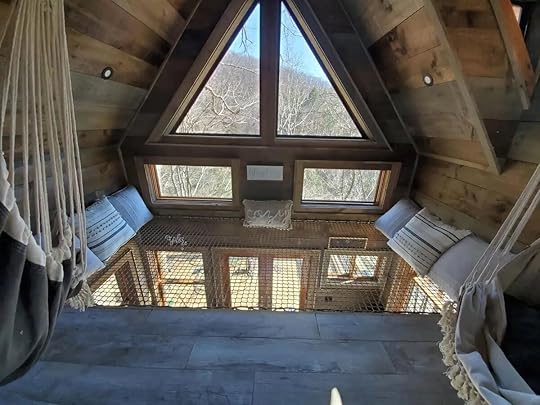
Photo: Airbnb
Embrace hygge at this handcrafted treehouse overlooking the Little Pigeon River. The space consists of a sleeping den kitted out with a bed, his and hers hammock chairs, and a netted relaxation area that peers over the woodland. With a secluded setting a short drive out of town, a firepit, and private hot tub surrounded by greenery this is perhaps the most romantic Airbnb Gatlinburg proffers.
Four guests, one bedroom
Price: $400 per night

Photo: Airbnb
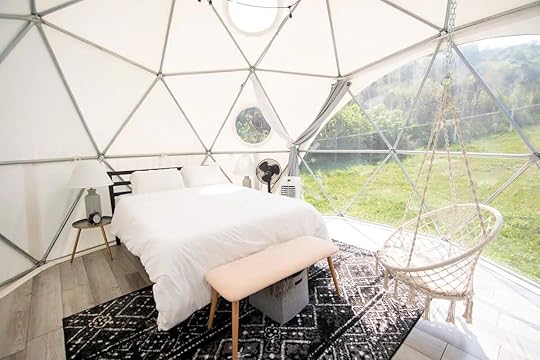
Photo: Airbnb
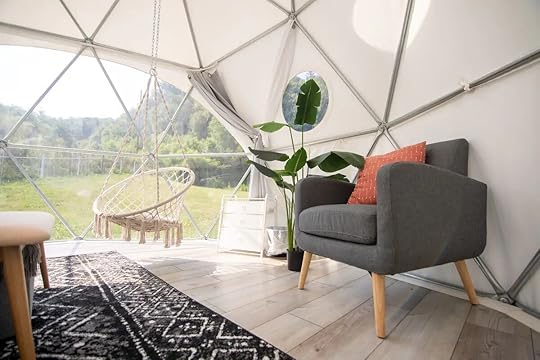
Photo: Airbnb

Photo: Airbnb
Get back to nature with a night at one of these eco-luxe domes – there are four available plus a tiny house with a kitchenette. Set upon a 140-acre patch of farmland, there is a fire pit, kitchen, outdoor shower, and flushable toilets on-site to share with other guests. Kick back on your personal porch during the day before settling down for a night of stargazing from the bed. Dogs are welcome at this pet-friendly Airbnb in Gatlinburg, TN.
Two guests, one bedroom
Price: $110 per night
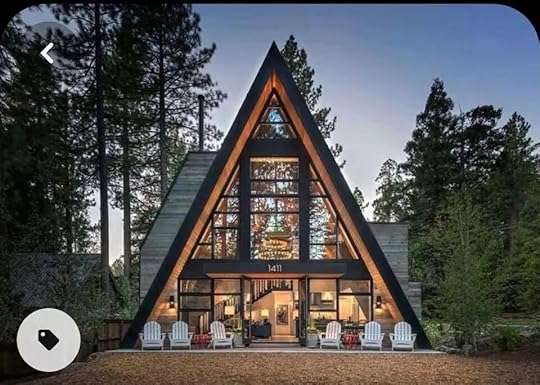
Photo: Airbnb
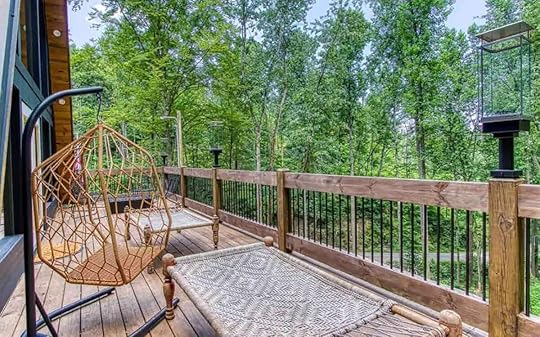
Photo: Airbnb
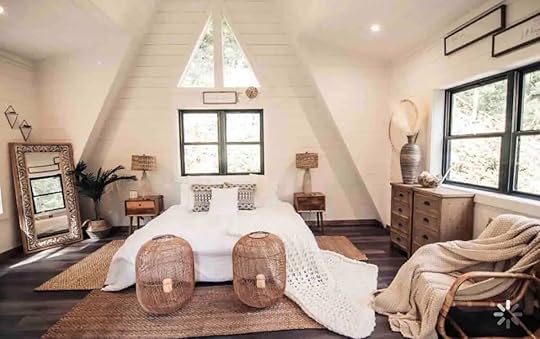
Photo: Airbnb
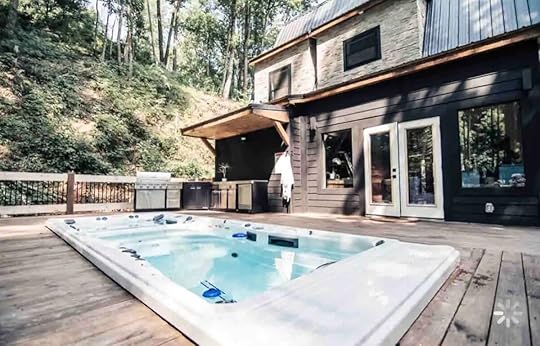
Photo: Airbnb
One of the most unique Gatlinburg cabins on Airbnb puts you right in the middle of your own fairytale. Instagrammable interiors include a claw-footed bathtub, swings around the kitchen island, and bohemian throws here, there, and everywhere. Hanging egg chairs on the terrace and an oversized sunken spa tub invite you to banish your worries. Events are welcome at this party-friendly cabin with prior approval.
Six guests, two bedrooms
Price: $390 per night
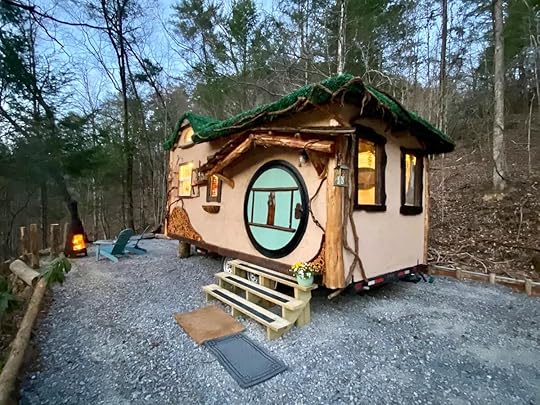
Photo: Airbnb
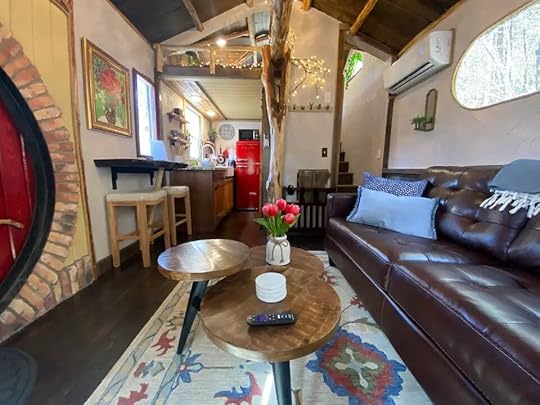
Photo: Airbnb

Photo: Airbnb
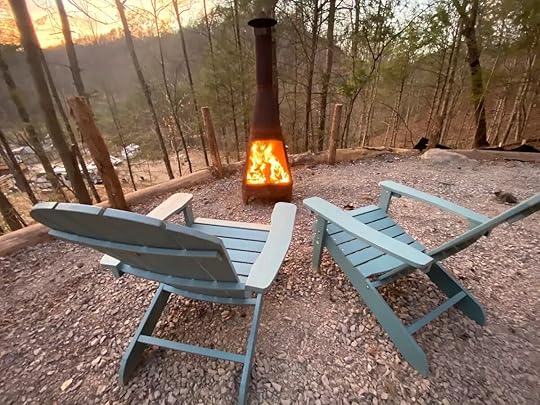
Photo: Airbnb
Inspired by Bag End, this tiny house in Gatlinburg, TN, on Airbnb will go down a storm with Tolkein fans. Step through the round doorway into your open-plan living space that fuses rural charms with modern conveniences. A snug bedroom slots into the mezzanine and you have a fully functioning bathroom below. Your backyard is fitted with a firepit emblazoned with Elvish script. Dogs are welcome at this pet-friendly woodland retreat.
Four guests, one bedroom
Price: $130 per night
You Can Buy Direct Flights To Hawai’i for as Low as $89 Today

Hawai’i lifted its travel restrictions on March 26, and now Alaska Airlines is making it easier to get to the islands than ever with deeply discounted non-stop flights from select airports.
Alaska Airlines discounted Hawai’i flightsLos Angeles to Maui: $89 Saver, $129 MainSan Diego to Kona: $89 Saver, $129 MainSan Jose to Maui: $89 Saver, $129 MainSan Diego to Honolulu: $119 Saver, $159 MainPortland, Oregon, to Kauai: $129 Saver, $169 MainSeattle to Kauai: $129 Saver, $169 MainSan Jose to Kauai: $129 Saver, $169 MainPortland, Oregon, to Kona: $149 Saver, $189 MainAnchorage to Honolulu: $157 Saver, $197 MainFlights this cheap don’t come without a catch. The best deals are on Alaska’s Saver fare level in the back of the plane and don’t allow seat selection or changes or refunds after 24 hours of purchasing the ticket. Main tickets aren’t much more expensive, however. The flights also must happen between April 25 and June 16, and can only be taken on a Monday, Tuesday, Wednesday, or Thursday.
And the most important part: All flights have to be booked by 11:59 PM PT on April 7.
If you can act fast and make the dates work, this is the perfect opportunity to see Hawai’i whether you’re looking to make the most of a first time visit or returning for the hundredth time. Regardless, make this trip extra special by giving back to the islands in an extra memorable way. 
These Denver Airport Hotels Put You Close To the Terminal With Luxe Amenities

Staying at an airport hotel is all about convenience, comfort, and cleanliness. Denver airport hotels range from high-end resorts to casual chains to budget-friendly options. In a nod to the modern penchant for points, nearly every hotel rewards program is represented in the hotels near the Denver Airport. Here are the top hotels in Denver from luxury to budget, all offering basic airport hotel amenities like a shuttle, breakfast on the go, and a place to pop open the laptop to burn through emails.
We hope you love the Denver airport hotels we recommend! Just so you know, Matador may collect a small commission from the links on this page if you decide to book a stay. Listed prices are accurate as of the time of publication. See our full Advertiser Disclosure here.
Headliner hotels near Denver International Airport
1. Gaylord Rockies Resort and Convention Center
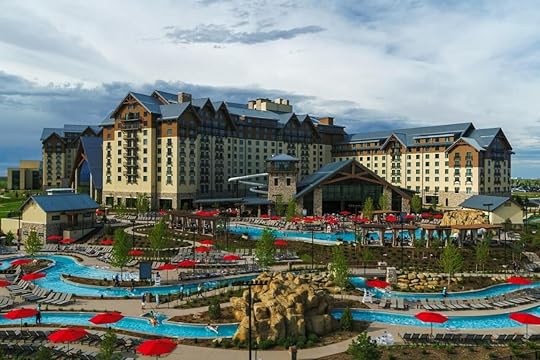
Photo: Booking.com
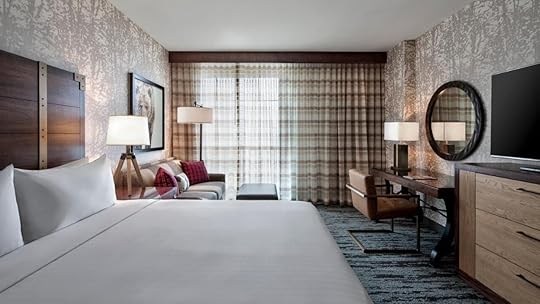
Photo: Booking.com

Photo: Booking.com

Photo: Booking.com
– Best for tasting mountain hospitality, before getting to the mountains –
If you’ve stayed in a Gaylord property before you know this is the stuff of hospitality dreams. Gaylord Rockies isn’t so much a hotel as it is a full-on village adjacent to Denver International Airport. There’s the hotel, which is outfitted with five-star amenities including high-thread-count sheets and tailored room service. Views from the rooms tend to include both mountains and departing aircrafts, a cool way to catch the “Wings over the Rockies” fever that swept through the Mile High City back when the old Stapleton Airport was located in the heart of town.
The real pull to this Denver airport hotel is the resort. Its spa is top-notch. In fact, the property is akin to something you’d find in Vegas — there’s a lazy river with waterside cabanas, a heated year-round indoor pool, and four onsite restaurants and bars. Then there’s the convention center, which hosts exhibits and entertainment even if you aren’t in town for a conference. Overall, Gaylord Rockies is by far the best of the hotels near Denver Airport.
Where the Gaylord Rockies Resort and Convention Center stands apart:
Entertainment. With indoor and outdoor pools, a waterpark with seasonal lazy river, tennis, and even live performances, you won’t find yourself lacking in things to do.Dining. Nine restaurants range from fine dining to cafeteria service, with plenty of places to pop in for a drink.Convenience. Gaylord Rockies is effectively a village in itself, just up Peña Boulevard from the airport. If you don’t want to venture offsite, there’s no reason to.Things to note before booking:
This is a resort. It’s large, bustling, and could be overkill for solo travelers simply needing a place to crash before their flight.Price: From $188 per night
2. The Westin Hotel Denver International Airport

Photo: Booking.com
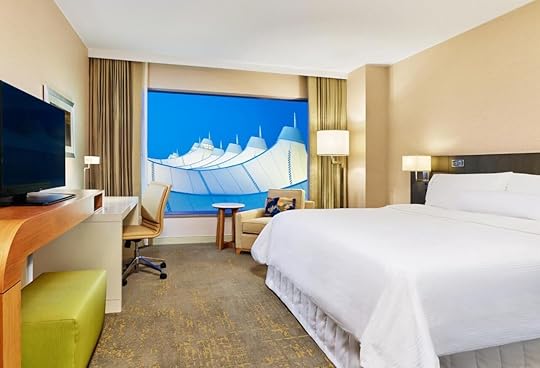
Photo: Booking.com

Photo: Booking.com

Photo: Booking.com
– Best for kicking off an epic trip –
Of course, in Denver, there’s no need to even leave the airport to have a top-notch hotel stay. The Westin Hotel Denver International Airport is located in the main terminal, steps from security and near all of the terminal amenities including airline check-in, baggage claim, restaurants, tap rooms, and shopping. Check-in for this Denver airport hotel is adjacent to the terminus of the A-Line commuter rail, which connects downtown Denver to the airport — making it convenient if you’re coming from the city for an early-morning flight.
Inside the hotel, The Sky Lounge offers cocktails with a view. The onsite restaurant, Grill and Vine, captures the city’s ethos of well-sourced food and drink options, including craft beer. Before heading to your flight in the morning, grab a cup of coffee at Ingredients. The hotel is also perfect for that nefarious Rocky Mountain weather — if you find yourself stranded after a late-night flight or stuck due to a cancellation, room service is available even at odd hours to calm the nerves.
Where the Westin Hotel Denver International Airport stands apart:
Convenience. TSA is literally right out the door and to the left of the hotel. Time it right and you could be parked at your gate sipping a coffee 20 minutes after leaving your hotel room.Amenities. The main terminal at DIA is loaded with restaurants, beer bars, and shops. You can easily walk to all of them. Furthermore, the light rail train into Denver picks up just outside the hotel’s front entrance.Luxury. The Westin Hotel Denver International Airport is unrivaled by other Denver airport hotels in top-notch trimmings. Staying here feels like a celebration of travel in and of itself.Things to note before booking:
If booking due to a canceled flight or bad weather, know that it won’t be cheap — demand pushes up the price.Price: From $284 per night
Top Marriott Bonvoy Denver Airport hotels
3. Courtyard by Marriott Denver Airport

Photo: Booking.com

Photo: Booking.com

Photo: Booking.com
With 24-hour airport shuttle service and the standard Courtyard by Marriott amenities, this Denver airport hotel is an anchor of the hotel village just up Peña Boulevard from the airport. Courtyard Denver Airport is ideal for families as well as business travelers, with in-room workstations and cable TV. Grab a continental breakfast or vending machine snack on the way to the airport in the morning.
Airport shuttle: Yes24-hour front desk: YesFitness center: YesWhere the Courtyard by Marriott stands apart:
Views. Book a room with a balcony and enjoy views of the city with the Rocky Mountains behind.Relaxation. Enjoy the fire pit patio and expansive lounge seating, perfect for a drink and conversation.Price: From $134 per night
4. Springhill Suites by Marriott

Photo: Booking.com

Photo: Booking.com

Photo: Booking.com

Photo: Booking.com
– Best for business travelers –
The Springhill Suites Denver Airport adds a dose of relaxation to your stay with an in-house bar at which to wind down after – or before – your flight. Rooms are clean and cozy, with suite options available, of course. Take in the sunset over the Rockies from the patio area or get in a workout at the full fitness center. This property is ideal for traveling workers, with fast WiFi and lounge space.
Airport shuttle: Yes24-hour front desk: YesFitness center: YesWhere the Springhill Suites by Marriott stands apart:
Space. Perfect for longer stays where you want more room spread out.Fitness. Multiple machines means no waiting to hit the bike or treadmill.Price: From $134 per night
Top Hilton Honors Denver Airport hotels
5. DoubleTree by Hilton

Photo: Booking.com

Photo: Booking.com

Photo: Booking.com
– Best for couples –
Travelers often only stay one night next to an airport and are often in a hurry when they do so. DoubleTree Denver Airport is ideally set up for this type of stay because it offers an onsite restaurant, bar, and lounge area, meaning you don’t have to worry about finding a restaurant (though there are plenty nearby) or getting about town when all you want to do is rest up and then head out. Just don’t forget to take advantage of the hot breakfast before you go.
Airport shuttle: Yes24-hour front desk: YesFitness center: YesWhere the DoubleTree by Hilton stands apart:
Luxury amenities. DoubleTree hotels feature excellent dining, quiet rooms, and large lobbies with plenty of space to lounge.Excellent staff. Concierge and staff are knowledgable about metro Denver, the Rockies, and the layout of the airport (including where to pop in for a great coffee on Concourse B).Price: From $114 per night
6. Embassy Suites Denver Airport

Photo: Booking.com
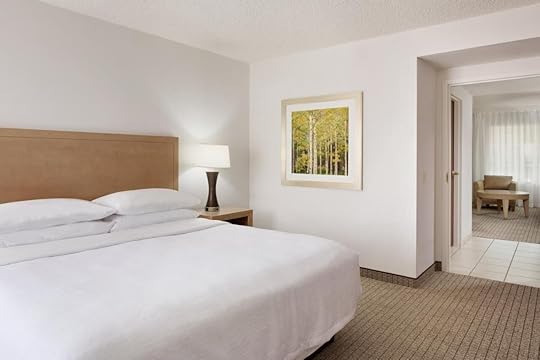
Photo: Booking.com

Photo: Booking.com

Photo: Booking.com
– Best overall experience –
Embassy Suites enjoys full-on lore status in the lexicon of American chain hotels. Its iconic open-air lobby design and wraparound interior balconies separate its aesthetic, and of course, you can wake up to a fresh copy of USAToday outside your door. This location is no different. Staying at this Denver airport hotel is a slice of luxury at a price point far below what you’d expect for such niceties — particularly given the free airport shuttle, full gym and pool area, business center, and spacious rooms. Claim Bar and Restaurant is open breakfast through dinner. The overall experience here? Top-notch.
Airport shuttle: Yes24-hour front desk: YesFitness center: YesWhere the Embassy Suites stands apart:
Design. You know you’re at an Embassy Suites the moment you walk into one. Its vibrant, open-air lobby and wraparound balconies make it the most welcoming of all Denver airport hotels.Pool. The pool here is a great place to hang out whether you’re solo or with family. The outdoor deck makes for solid sunbathing.Price: From $143 per night
Top World of Hyatt Denver Airport hotels
7. Hyatt House Denver Airport

Photo: Booking.com

Photo: Booking.com

Photo: Booking.com
– Best for longer stays –
Hyatt House Denver Airport is efficient, modern, and clean. Many of the bright rooms at this Denver airport hotel are done up apartment-style, making this property more like an Airbnb but with hotel amenities and service. Enjoy a kitchen, large bedroom, and plenty of lounge space — of all the hotels near Denver International Airport, Hyatt House is the best for the business traveler who needs to feel at home for a stay of a few days or longer.
Airport shuttle: Yes24-hour front desk: YesFitness center: YesPrice: From $135 per night
Where Hyatt House Denver Airport stands apart:
Convenience. Hyatt House takes the things people love about Airbnb, like a kitchen, couch, and living room, and combines them with hotel amenities like a good breakfast and 24-hour front desk.Longer stays. If staying two or more nights, Hyatt House is an easy place to settle into and feel like you’re at home, due to its furnished apartment-like vibe.Top Wyndham Rewards Denver Airport hotels
8. Days Inn and Suites

Photo: Booking.com

Photo: Booking.com
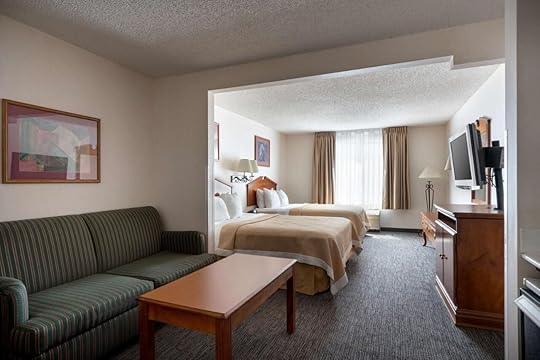
Photo: Booking.com
If it’s been a while since you last stayed at a Days and Suites, we encourage you to give this well-known chain a refresher course. The brand’s hotel near Denver Airport is clean and quiet, and equipped with modern amenities including in-room workstations and a comfortable lounge. Opt for a suite and enjoy a living room space with cable TV and a luxe couch — but no matter which room you book, WiFi and continental breakfast are on the house. At its budget rate, you can’t beat this Denver airport hotel’s value.
Airport shuttle: Yes24-hour front desk: YesFitness center: YesWhere Days Inn and Suites stands apart:
Streamlined experience. If you’ve stayed at one Days Inn, you’ve stayed at every Days Inn. The rooms are consistent in terms of basic comforts and offerings.Things to note before booking:
Bring headphones, as the walls aren’t as sound-insulated as you’d find in higher-tier hotels.Price: From $84 per night
9. Wingate Denver Airport

Photo: Booking.com

Photo: Booking.com

Photo: Booking.com
The Wingate Denver Airport offers one thing other Denver airport hotels do not — a vibe that’s at once classy and contemporary yet still home-y. Rooms are minimalist and clean. Continental breakfast is available for dine-in or to-go. And the hotel’s suites go so far as to fully separate the bedroom area from the living room. There’s plenty of room to work and even more to relax, whether you’re the type that likes to plug in at the desk in your room or head down to the lobby and relax among the general bustle.
Airport shuttle: Yes24-hour front desk: YesFitness center: YesWhere the Wingate Denver Airport stands apart:
An elevated experience at a low price point. Wingate hits that fine line between efficiency hotel and mid-level hotel just right, with snazzier rooms and a cozy lobby, at a price point that won’t make you think twice about stepping it up a notch.Accessibility: The hotel offers many rooms that are fully accessible for those with movement impairments. These rooms embody the entire hotel experience.Price: From $110 per night
Top IHG Rewards hotels near Denver Airport
10. Crowne Plaza Denver International Airport

Photo: Booking.com

Photo: Booking.com

Photo: Booking.com
Crowne Plaza Denver International Airport offers something none of the Denver airport hotels do — easy access to the city center. It’s Interstate 70 location puts you downtown in minutes, ideal for travelers who need access to the 16th St. Mall, the Colorado Convention Center, or the host of venues, stadiums, and amenities that the city has in its core. You’ll also enjoy the onsite and nearby dining — a major step-up from the diners and chains that populate most airport hotel villages.
Airport shuttle: Yes24-hour front desk: YesFitness center: YesPrice: From $151 per night
Where the Crowne Plaza stand apart from the rest:
Access to the city. Because it’s located five minutes further from the airport, you’re closer to the city center, including hotspots like Northfield Stapleton and Aurora’s Little Korea dining options.Large rooms. Choose a suite or standard and you’ll space to stretch.11. Holiday Inn Express and Suites Denver Airport

Photo: Booking.com

Photo: Booking.com
The Holiday Inn Express and Suites Denver Airport is one of the closest hotels to DIA. It’s also incredibly streamlined — convenience is the name of the game with this brand, and its regulars have integrated their stay here into their travels as smoothly as a finely-tuned pre-boarding airport routine. Grab a late-night snack, take breakfast to-go, and even get a workout in. The rooms are clean and simple. And there’s no need to leave hours before your flight just to commute.
Airport shuttle: Yes24-hour front desk: YesFitness center: YesWhere the Holiday Inn Express and Suites stands apart:
Efficiency. You know to expect, and it delivers every time.Variety. Choose a basic king bed room or opt for a suite without paying high-end prices.Price: From $123 per night
More like thisWhere to StayThe 12 Best Airbnbs in Denver for Beer Tours, 420, and Mountain VibesWhy Tamarindo, Costa Rica, Is an Ideal Base for Solo Travelers

The Pacific coast of Costa Rica entices with its stunning beaches, lush green mountains, national parks, and abundant wildlife. When you’re traveling alone, the addition of a laid-back town that you can use as a base for activities is key. In the country’s northwest Guanacaste Province, Tamarindo is the ideal beach town for solo travelers — a walkable place that offers plenty of relaxed activities and opportunities for cultural immersion.
Tamarindo offers solo travelers the right mix of adventure and cultural activities. And despite its crowded beach town reputation, Tamarindo has the same warm and relaxed Pura Vida vibe that embodies the best of Costa Rica. Literally “pure life,” Pura Vida is more than just a phrase; it is a way of life and greeting, much like aloha is in Hawai’i. Here’s how to make the most of it.
We hope you love the eco-hotel we recommend! Just so you know, Matador may collect a small commission from the links on this page if you decide to book a stay. See our full Advertiser Disclosure here.
Getting thereI traveled to Tamarindo via Miami, arriving in Costa Rica’s second major airport in Liberia. There, a taxi whisked me off to Tamarindo, a peaceful ninety-minute drive away. On our way, I took in the landscape: smooth roads, roadside food shacks called “sodas,” fruit stands, and lush forests as far as the eye can see. Costa Rica is one of the most eco-friendliest countries in the world with nearly 30 percent of its land reserved as national parks or private reserves, a huge draw for adventurous and eco-conscious travelers.
I could tell we were approaching Tamarindo as our travel slowed a bit with a few more cars on the road. Sidewalks — just a sandy part of the road — looked increasingly busier with people in flip flops and bathing suits. Beach-facing resorts, restaurants, cafes, craft stores, and surf shops came into view. Most importantly, I got a whiff of salt water, which means one thing — the beach was near.
Stay in an eco-hotel
Photo: Hotel Boruca Tamarindo/Facebook
You don’t need a plush bank balance to afford an eco-hotel, and there are many inexpensive and green-conscious hotels in Tamarindo. I lucked out with Hotel Boruca, a five-minute walk from Playa Tamarindo. It has a pool area surrounded by large coconut and shade trees, which are a boon in hot weather. If that’s your thing, you can do nothing but lounge at the poolside with a drink in hand and watch a family of monkeys jump from tree to tree in play. They come as far as the top of the fence that separates the property from its neighbor, but they do not enter the compound.
The rooms are clean with wooden bed frames, windows or a sliding door for natural light, the latter of which have room darkening curtains that must be drawn when the air-conditioner is on. There are notes to switch off lights and the a/c when going out or when not in use. This is part of Costa Rica’s engagement in tackling climate change as these measures save energy. Lastly, a cool feature at this hotel is the eco shower made of stone that allows for natural drainage into the stone cracks.
Celebrate your inner beach bum
Photo: Fotos593/Shutterstock
If all you want to do in Tamarindo is lounge beachside until your departure, you will not be blamed for your decision because the ambience is relaxed, the town is safe for a solo female traveler, and the people are super friendly. Within Tamarindo are two white-sand beaches accessible on foot — Playa Tamarindo and Playa Langosta — and they are as different as night and day.
Where Playa Tamarindo is within Tamarindo beach town and is a 10-minute or less walk from surrounding hotels and beach-side resorts, Playa Langosta is a 20-minute walk through quiet, residential areas with private villas, resorts, and apartment hotels. Playa Tamarindo is popular with tourists because of its tiki bars, cafes, live music, crowds, and surfs, while Playa Langosta is more popular with surfers for its much stronger surfs and epic sunsets. Whichever you choose, grab some drinks and snacks, secure a deck chair and parasol, and plant yourself on the sand.
Unleash your adventurous side at the playas
Photo: riekephotos/Shutterstock
Alternatively, indulge in activities at Playa Tamarindo like stand up paddle boarding (SUP), kayaking, ATV rides, boat tours, and even a sunset catamaran tour available from activities promoters at the beach. You cannot miss their advertising on the roadside or at beach stands — but, if you prefer a referral, ask any of the friendly locals or long-term expats for options. All levels are welcome so a novice surfer or paddle boarder can learn on calmer tides. All beaches have identical water activities, so if you miss one, you can get it in another.
If adventure for you is more about taking in the beachside wildlife, head just a bit north to the Las Baulas National Marine Park — an important site for leatherback turtle conservation. The park is open daily from 6:00 AM to 6:00 PM, but only until 5:00 PM during turtle nesting season from October through February. At that time — either when turtles come to nest or the hatchlings emerge and head out to sea — you may be able to participate in guiding tours designed to protect the endangered turtles.
Take a day trip to Samara Beach
Photo: LMspencer/Shutterstock
Guanacaste Province is packed with other inviting beaches in even smaller beach towns. And while they are lovely beach towns for solo travelers, we think their small size makes them best suited as day-trip destinations. If you can cram a day trip into your itinerary, Samara Beach is a great option.
Samara is two hours from Tamarindo, through the towns of Santa Cruz and Nicoya. The ride is on smooth and fairly empty roads flanked by reforested trees on either side, planted as part of the Costa Rican government’s bid to offset greenhouse gas emissions and tackle climate change.
Samara is much smaller, low-key, and definitely less crowded than Tamarindo, but not without the Pura Vida atmosphere that is Costa Rica’s mantra. Rent an affordable deck chair and parasol, order some roasted snapper, fries, cold beverage, and people-watch your time away. If you choose to, partake in activities like stand up paddle boarding (SUP) or surfing lessons.
You can also kayak through the mangroves in Ora River between Samara and Playa Camaronal. You could do a horseback beach ride starting at $20 for a one-hour ride along the beach and to a nearby eco-friendly reserve. To check out the wildlife in the lush mountains that overlook the beach, you could take a ride in a gyrocopter. Gyrocopter tours start at about $130 per person for a 20-minute flight and go up from there.
Alternatively, yoga is as popular in each of these beach towns as surfing, and you’ll find opportunities for beach-side yoga in Samara and elsewhere.
Get your food fix at affordable local restaurants, right on the beach
Photo: Booking.com
All that lounging, watersports, and crisp air leaves one peckish, and you are spoiled for choice with food on the streets of Tamarindo. Tamarindo has a large expat population, predominantly Canadians and some Italians, who immigrated decades ago and have beach-centric businesses in town.
You will find popular spots like Jonny Tamarindo. It’s the in-spot and extremely popular with the expat Canadian community and tourists alike for its live music, prime beach-side location, food, and cocktails. It gets full in late afternoons as its sunset views are breathtaking. The best breakfast is at NOI Bistro, which serves a delicious shredded coconut pancake stack with orange juice for breakfast that is fuel for your day of activities. It is also part of a hostel, so it is a prime spot to make new friends, ask for recommendations, or people-watch.
There are also taco spots, sushi, Thai, Vietnamese eateries and food trucks for a wider culinary variety. For lunch or dinner, seek a seafood spot at many of the beach restaurants and have your fill of affordable lobster dishes. If available, try the national dish of gallo pinto or “spotted rooster,” made from stir-fry rice and beans with vegetables and some fried plantains. Wherever you eat, finish with a Pura Vida cocktail as you listen to live music at Jonny Tamarindo’s and watch the setting sun on the beach.
Browse Indigenous arts and crafts stores, then indulge in chocolate
Photo: Stefan Milivojevic/Shutterstock
You cannot miss the craft stores in Tamarindo with their attractive collection of Indigenous masks, hammocks, jewellery, baskets, art, and adornments. These craft stores are expat-owned and either source from local indigenous communities in Costa Rica or imported from South America or Bali — so always ask if you are interested in product sourcing.
Nevertheless, you will find many intricately crafted Boruca masks, baskets, and hand-drawn art. Boruca are a indigenous community famous for their carved masks, and you’ll find them in every craft store. Additionally, visit the Chorotega indigenous community in Guaitil, thirty minutes outside Tamarindo, and watch their sculptors create pre-Columbian-style pottery with clay and natural dyes; these are sold as their main source of income.
Costa Rica’s indigenous community makes up one percent of its total population. There are Indigenous reserves country-wide that fuse traditional activities into Costa Rica’s tourism initiatives supporting cultural preservation.
Another cultural activity a solo traveler can indulge in is a chocolate tour. Costa Rica is famous for the cacao bean — known as the “food of the gods” to the Mayan civilization — that gives us chocolate products and is still a large part of the country’s economic and Indigenous activities. You’ll find many chocolate tours in the area, but we recommend Reina’s Chocolate Tour in Tamarindo which offers chocolate tasting options, chocolate tea, organic Costa Rican chocolate, and chocolate drink recipes.
Soar in the clouds on a zipline or pound the pavement
Photo: RossHelen/Shutterstock
Ziplining was invented in Costa Rica over 50 years ago by a biologist who wanted a means to study the forest canopy. Near Tamarindo, you can try your hand at platform ziplining. Book a tour with the Pinilla Canopy Tour, the Monkey Jungle Canopy Tour, or the Black Stallion Eco Park & Estates — all of which are relatively close to Tamarindo. It is an incredible feeling to quietly soar a few hundred feet above ground.
The best way to acquaint yourself with Tamarindo is by walking the length of its main street, Calle Central, northwards until the boisterous nature of the town subsides and then turn back. Pop into shopping malls, boutiques, eco-friendly shops, ice cream bars, and restaurants along the way. See what activity catches your fancy from the tour offices and book it on the spot, patronize Indigenous craft sellers in mobile kiosks, and indulge in the friendly “Pura Vida!” greetings from locals and fellow tourists alike. And hopefully, at the end of your stay, you can take some of the Pura Vida vibe back home with you. 
A version of this article was previously published on July 7, 2021, and was updated on April 7, 2022.
More like thisWhere to StayThe Best Resorts for the Ultimate 2021 Vacation in Costa RicaHow to take your dog backpacking
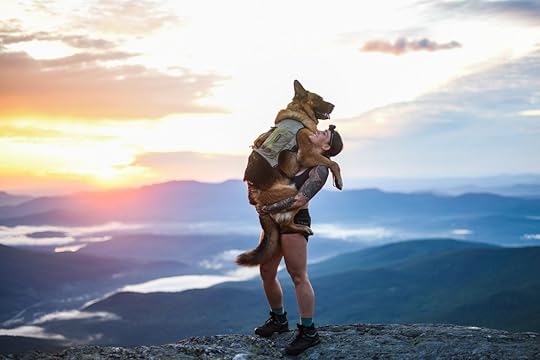
Adventure outdoors has a way of bringing people together, and for many families, backpacking with a dog is a way to bond with their four-legged friend. Few people know that connection quite as well as Nicole Handel and her trail dog Bear.
This interview has been edited for length and clarity.
Handel was never the outdoorsy type, but after inheriting Bear in the aftermath of a breakup she realized that, like most dogs, the active German Shepherd loved spending time outside. The two began hiking regularly in the woods and mountains near their home in Vermont, and what started as a way for them to get some exercise together quickly turned into a deeper connection.
They began a tradition of “summit hugs” when they got to the top of the mountain; Handel would kneel down to pet Bear and ask him for “hugs,” and when he put his paws on her shoulders she would scoop him up for a big “bear” hug. A photo of the two embracing atop Mount Mansfield went viral in 2017 and quickly made the duo Instagram stars.

Photo: nicolehandel/Instagram
From Mount Washington to Moab, Handel’s feed shows her doing everything from hiking and climbing to mountain biking and splitboarding, all with Bear by her side. In addition to all this, they go on one big backpacking trip per year and anywhere from five to 10 shorter jaunts, covering every type of terrain from deserts and canyons to rainforests and alpine meadows. If anyone knows the ins and outs of taking a dog out on the trail, it’s Nicole Handel. So, we caught up with her to get her top tips for backpacking with your favorite four-legged friend.
First things first, make sure they’re ready for the trail.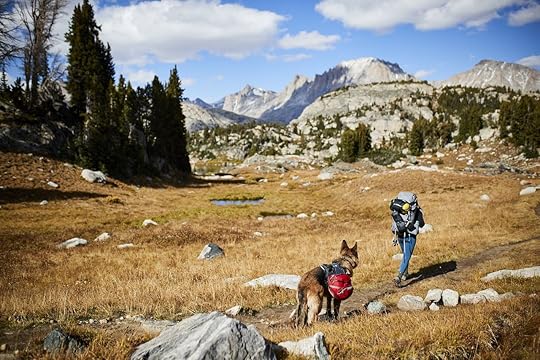
Photo: kammitchellphoto /Instagram
Before you pull up to the trailhead, you’re going to need to make sure your pup is up for the challenge. Backpacking with a dog is taxing for humans and canines alike, and you don’t want your dog to bite off more than they can chew. Handel recommends checking with your vet before anything else. “Your vet can assess your dog’s fitness level by feeling their legs, hips, and paws, and also recommend a suitable distance to start with depending on your dog’s breed, age, and ability,” she says.
From there she recommends starting small and easy and keeping an eye on how they are managing. “Do a mile on soft dirt and pay attention to whether they are keeping up or not, if they are lifting up their paws in pain, limping,” or showing any other signs of difficulty. This is especially important for older dogs or smaller breeds. And if you have a puppy, make sure you ease into things and follow your vet’s advice in terms of when to get started hiking. Although Handel carried Bear in her arms on some early hikes, he did not start fully hiking on his own until he was about eight months old. It may be exciting to have a new hiking companion but always make sure your vet has cleared your dog for activity before you get them on the trail.
Get the right gear.We hope you love the products we recommend! Just so you know, Matador may collect a small commission from the links on this page if you decide to book a stay. See our full Advertiser Disclosure here.
Gearing up looks a little different when you’re backpacking with a dog and careful planning at home can save you a lot of headaches on the trail. You’ll be carrying everything you need on your back, and your dog should do the same.
Handel has two different sized Ruffwear dog packs for Bear, depending on the length of their trip and the time of year. Inside the pack Bear carries water, food, a collapsible bowl, an LED collar to wear at night, a PackTowl to clean mud or water off his paws before coming into the tent, poop bags, and a small Adventure Medical Kits dog first-aid kit. In addition to that, Handel carries a Whyld River sleeping pad for Bear, which “gives him a soft, comfortable surface to sleep on in the tent, as well as insulates from cold when we winter camp,” she says.
Know when to leash your dog.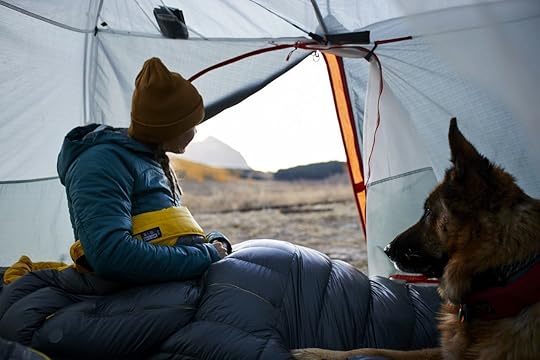
Photo: kammitchellphoto /Instagram
Now that your pup is outfitted with all the gear they’ll need to conquer the backcountry, it’s time to get out there and start exploring, right? Not so fast. Before you step foot on the trail it’s important to know the proper etiquette for bringing your dog along and to make sure that your dog is adequately trained to handle whatever you may encounter. For Handel, this is the most important aspect of hiking or backpacking with your dog.
First off, the age-old question: do I leash my dog or not? For Handel it’s simple. “My general rule of thumb is this: If your dog does not have perfect recall — and I mean that they will come back to you immediately no matter what they’re doing — they should not be off-leash while hiking or camping, ever,” she says. “This is for your own dog’s safety, as well as to respect others who may be on the trail.” She stresses that no matter how friendly or harmless your dog may be, you never know how other dogs or people will react, and it’s important to respect everyone else’s experience on the trail.
For example, on a recent trail run Bear startled a woman heading in the opposite direction. “She saw Bear and said that she is terrified of large dogs and is prone to panic attacks,” says Handel. “Luckily, Bear is trained to always heel to my side unless given permission to roam around me, so we asked her if we could pass by and we did, with no issue. But if Bear didn’t have that training and etiquette, he’d likely have really scared that woman.”
So if you would like to keep your dog off-leash, take the time to train and discipline your dog. Handel stresses that this doesn’t have to be all hard work and toil. “I think that more folks could benefit from using hiking and backpacking as a place to have some fun and do a bit of training with their dogs,” she says.
“I love to work the same obedience commands with Bear that I would do at home, but on the trail.” For example, at home, Handel uses the “place” command to get Bear to go to his dog bed — his own place in the house. On the trail, Handel will keep Bear close by pointing to a tree stump or large rock and using the “place” command. “He hops up excitedly, and gets the benefit of mental stimulation and feeling like he has a ‘job’ while we are out having fun,” she says. “The same can be said of having your dog heel or having your dog sit and stay while you hike ahead. Make it fun but make it functional, too!”
Whether your dog is properly trained to stay off-leash or not, be sure to check the pet regulations for wherever you’re visiting. In many places, dogs are required to be on-leash at all times, and in other spots, dogs are prohibited altogether, so make sure you’re up to date with regulations before planning your trip.
Pick up after your dog.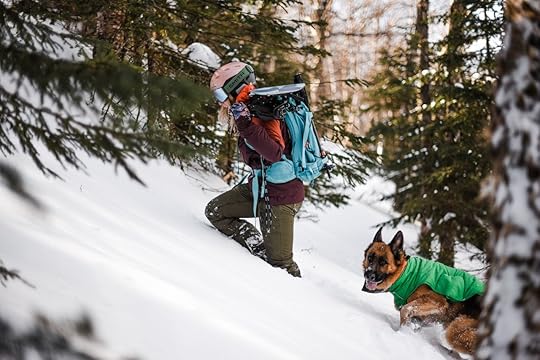
Photo: nicolehandel/Instagram
Spend enough time backpacking and at some point, you’re likely to come across someone else’s waste — unfortunately it’s an aspect of trail etiquette that many humans have yet to master for themselves, let alone for their dogs. Disposing of waste is important not just for health and hygiene, but also to preserve the trail for others. Failure to do so not only ruins the experience for everyone else, but it also jeopardizes future access for dogs. “Plenty of once-dog-friendly places, like local ski mountains, have shut down access to dogs because of waste and plastic being left behind,” says Handel. “If you are in the wilderness and are digging a hole for your own waste, you should be doing the same for your dog; if you are packing out your waste, you should pack out your dog’s waste. Simple.”
Prepare for emergencies.While there’s a lot of fun to be had exploring remote backcountry, at the end of the day it’s a wild place, which means it can be unpredictable. It’s important to go in with a plan for what to do if something goes wrong, and also to know the steps you can take to reduce the chances of an emergency in the first place.
Encounters with wildlife can be extremely dangerous or even deadly for dogs. For Handel, it all comes down to training. “We go backpacking out west once a year, where there are grizzlies, mountain lions, moose, and other dangerous animals,” she says. “These are all animals that could be really dangerous if Bear had contact with them. So again, knowing when to leash your dog is imperative.” If your dog is still struggling with recall, Handel suggests drills and training at home until it’s foolproof, and keeping them on a leash otherwise. Another easy preventative measure is to put bells or jingling dog tags on your pet’s collar to ensure you’re making enough noise to scare off any wildlife.
In case of medical emergencies, Handel always makes sure that Bear is carrying his first-aid kit, stocked with supplies to help with small injuries like a torn paw pad, an allergic reaction, or a minor wound. In particular, Handel stresses the importance of self-adhesive medical wrap as Bear is prone to cutting his paws on sharp rocks and ice. “Being able to clean and wrap these things while on the trail is so helpful,” she says.
Enjoy bonding in the great outdoors.
Photo: kammitchellphoto /Instagram
While it’s important to prepare for everything you may encounter on the trail, don’t get so caught up in the details that you miss the best part: experiencing an adventure in the wild with your companion. Handel sees adventuring outdoors as a unique way to spend time and bond with a dog, and she couldn’t imagine leaving Bear behind when she goes out into the wild. “When most people ‘vacation’ with their dogs, they still spend a chunk of time leaving their dog in a hotel room or with a dog walker or in the car,” she says.
She’s noticed that some of the deepest bonding has come not necessarily from any specific experiences, but rather from the sheer amount of time they’ve spent together, away from the bustle and distractions of civilization. “When backpacking or taking longer road trips, Bear and I are together 24/7,” she says. “On this most recent trip, we spent 16 days and nights straight together. There wasn’t a single moment that we were apart, and through that amount of exposure, you really come to know another being. Most of the time is silent and some is uneventful, but just being together facilitates that bond.”
For Handel, a life outdoors has always been the foundation of her bond with Bear, but it’s even more special because it’s a life they created together. “We have learned how to do everything we do together,” says Handel. “I didn’t splitboard or mountain bike or run or rock climb or camp when I got Bear, so he has learned how to be a part of all of these worlds alongside of me. There’s something really special about figuring these things out together, and in some ways, encouraging one another. I think that in the same way that humans bond after doing challenging things and spending long days together, humans and dogs bond, as well.” 
A version of this article was previously published on January 3, 2020, and was updated on April 7, 2022.
More like thisPetsCamping With Your Dog Is Easier Than You Think. Here’s How To Do It.April 6, 2022
There Are About 5,000 Women’s Trail Shoes Available. But These Are the Only 6 You Need.
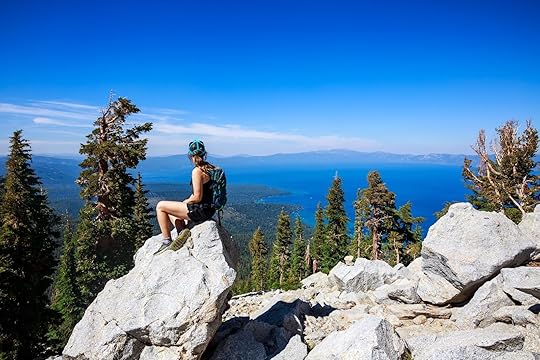
Whether you call them trail runners, hiking shoes, hikers, trail shoes, or some combination of the four, the fact remains that a pair of lightweight trail shoes are one of the most useful and versatile pieces of footwear you can have in your closet. They’re light enough for travel, durable enough for hikes, and lightweight enough for running. And spring is the best time to buy a new pair of women’s trail shoes, since it’s when brands introduce their newest styles. That gives you a month or two to break ’em in before setting out on your longer backpacking trips, and may mean you can find last year’s models on sale.
While all types of hiking footwear have their place — hiking boots are ideal for trips where you’re carrying a heavy pack and trail sandals can be useful for quick hikes with stream crossings — a comfortable, lightweight pair of women’s trail shoes can serve as your go-to shoe for outdoor adventuring.
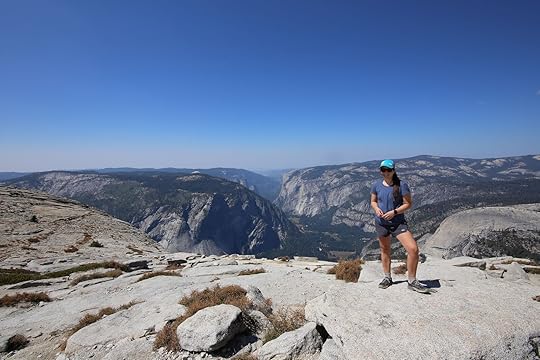
Testing Astral Designs shoes on Half Dome. Photo: Suzie Dundas
I’m a huge fan of hiking. I wrote a 300-page trail guide to hiking around Lake Tahoe, and try to hike at least once a week (when the trails aren’t covered in snow). I usually do several backpacking trips each summer, too. I’ve hiked in knee-deep mud and gale-force snow in Patagonia, through the desert in Joshua Tree National Park, and through dumping rain and near-100-percent humidity in Costa Rica and French Polynesia. I’ve tested, loved, hated, and ruined dozens of pairs of women’s trail shoes, so it’s fair to say I’ve done my due diligence when it comes to the recommendations below.
What makes something a trail shoe?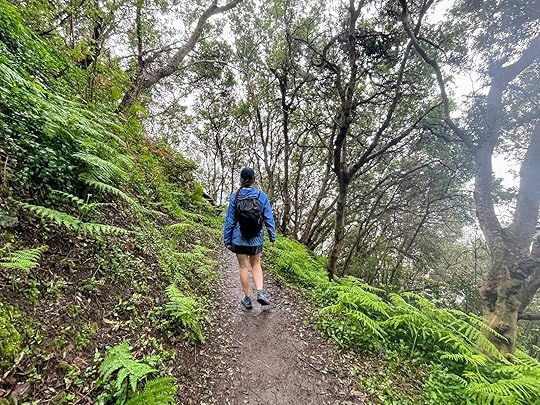
Giving the Altra Lone Peak 6 a test hike on a rainy day. Photo: Suzie Dundas
There’s no official criteria a product has to meet to be considered a trail shoe or trail runner, but probably the most important criterion is whether the shoe has an outsole (a bottom) made for handling off-road conditions. The outsole needs to be grippier than a road shoe to minimize slipping on steep ascents, wet rocks, or loose pebbles and other unstable surfaces. It also needs to be durable, since off-road surfaces are abrasive and can wear down softer materials made for tracks and gyms.
Other good features to look for include whether the shoe is waterproof (which you may or may not need, depending on your average trail conditions) and how secure your foot is in the shoe. Even though it may feel flexible, a good women’s trail shoe should hold your foot securely inside the shoe to help prevent ankle twists that can come with landing on uneven surfaces (like rocky trails). Some shoes accomplish this through the shape of the footbed, while others rely on lacing and tightening systems to secure your fit.
Other features you’re likely to find in trail runners include toe caps (to avoid stubbed toes) and mesh segments, which can be great for moisture control and breathability.
Are they for running or hiking?Both, mostly. A shoe specifically made for trail running may have a bit more support/padding and a slightly more curved shape to reduce foot fatigue. But women’s trail runners and women’s trail hikers are so similar that it’s really more a matter of personal preference than suitability for hiking versus running. Most runners do a mix of both, anyway.
What’s the difference between a hiking shoe and a trail shoe?That depends who you ask, as most people use the terms interchangeably. Most brands will say that their trail shoes are a bit lighter and more versatile than their hiking shoes, which often resemble a hiking boot minus the ankle cuff. Hiking shoes may also be a bit stiffer than trail shoes.
We hope you love the women’s hiking shoes we recommend below! Just so you know, Matador may collect a small commission from the links on this page if you decide to buy anything. Listed prices are accurate as of the time of publication. See our full Advertiser Disclosure here.
The 6 best women’s trail shoes you can buy right nowSaucony Peregrine 12
Photo: Saucony

Photo: Saucony
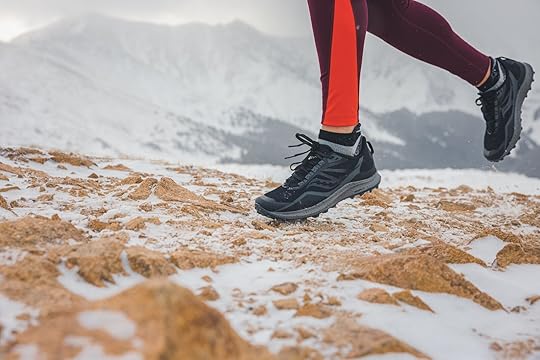
Photo: Saucony

Photo: Saucony
The Saucony Peregrine 12 just came out in early 2022, but the former version — the Peregrine 11 — is highly rated among buyers no matter what website you’re looking on. The 12 is 1.5 ounces lighter than the 11, which may not sound like much, but when you’re dealing with shoes this lightweight, it really does help fight foot fatigue. It’s designed for running (it’s named after the fastest bird on the planet, after all) but works well for minimalist hiking or jogging, too. Saucony also designed it with recycled materials, which we always like to support.
But where this shoe really shines is its support and cushioning. It uses what the brand calls “PWRRUN” — a cushy foam that somehow manages to be durable enough to last for several seasons but is still squishy and responsive enough to provide just a touch of springiness with each step. I’m not a runner, due to an ongoing back problem but mostly a general dislike of the sport, but every once in a while, it is fun to move a little faster on a sweet stretch of trail through the woods. I can report that these shoes felt less jarring on my back and seemed to grip well on the landings, despite the fact that I’m sure my running form and landings leave much room for improvement. I also like that they’re only around $130 (or under $100 if you opt for the Peregrine 11), which is a reasonable price in a market where prices seem to jump every year. Oh, and it comes in a wide version, too.
Sizing: Women’s size 5 – 12, half and whole sizesGuarantee: Flexible; contact them if there’s a manufacturing defect and they’ll try to make it rightPrice: $130Altra Lone Peak 6
Photo: Altra Running
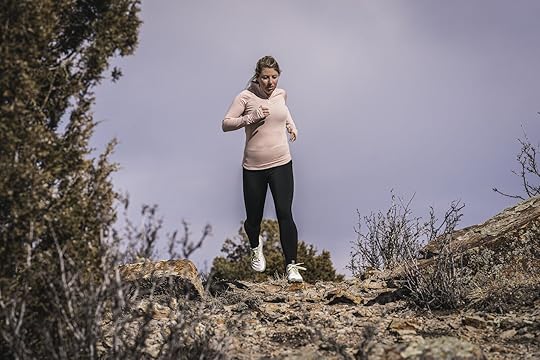
Photo: Altra Running
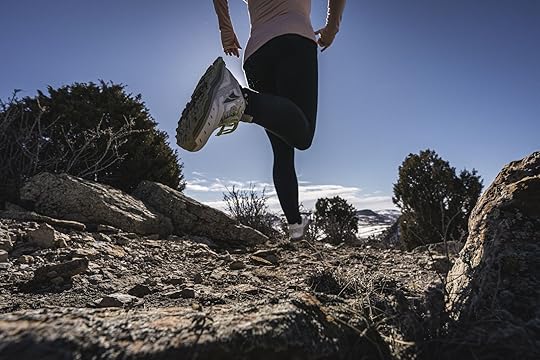
Photo: Altra Running
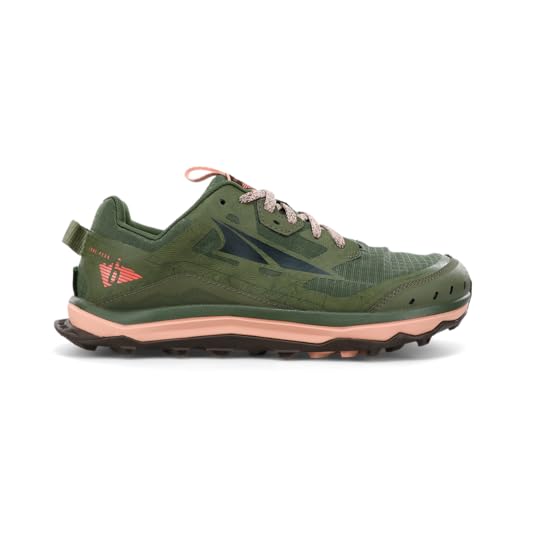
Photo: Altra Running
As a brand, Altra’s backstory is fascinating. The two founders worked in a running store and felt like the super padded, super curved running shoes on the market weren’t well-suited to their running style. So they partnered with a nearby cobbler and began chopping the bottoms off shoes from well-known brands to create a flatter, more natural shape. Eventually, word got out, and hundreds of other runners started to hire them to do the same to their shoes. After a few years, they created “Altra,” a brand that started with running but now makes various types of athletic shoes.
I’ve worn a few Altra shoes, and across the board, they’re comfortable out of the box. But the Lone Peak 6 seems ideal for hiking as the wide toe box gives your toes plenty of space to expand, so you can forget about blisters or red spots, even if you’re carrying a heavier pack. Both the mens and women’s version have this wider toe box, but the women’s versions are more specific to a woman’s foot shape, with a slightly more narrowed heel. In women’s versions, the metatarsal pads (which protect small foot bones) are in a better position for the average woman’s foot, too. But the wide toe box isn’t just for people with wide feet — your toes naturally spread with impact, so more space is helpful for running and hiking even for narrow feet.
Runners may especially like that the Lone Peak 6 has an extra optional eyelet on the lacing system. Lace through it when you’re running and skip it when you’re hiking, or use it all the time if you have an especially narrow foot. If you don’t care about that extra lacing option and don’t need the newest version, you can probably find a good deal on the older Lone Peak 5. By the way, the mesh on the toe box isn’t waterproof, but it does dry really quickly. I wore them on a soggy, muddy hike, and the top of the shoe was dry by the time I got home about 30 minutes later.
Sizing: Women’s size 5 – 12, half and whole sizesGuarantee: 500-mile guarantee against defectsPrice: $140Forsake Thatcher Low WP
Photo: Forsake

Photo: Forsake

Photo: Forsake

Photo: Forsake
At first glance, the Thatcher Low WP from somewhat indie brand Forsake doesn’t look like a trail shoe — it looks like a stylish urban sneaker you may wear to a picnic. But don’t let the non-trail, non-traditional look fool you. It’s a capable, comfortable, and — if this matters to you — a totally vegan shoe. Though it’s not the lightest on this list, it does an excellent job of keeping your feet cool with various mesh materials, and the outsole is super-grippy without being so big and bulky that it looks out of place on sidewalks.
While these aren’t the go-to shoe I’d recommend for serious trail hikers and runners, they are what I recommend to people who like to hike while traveling. They’re plenty supportive and comfortable enough for a full day hike, but since they don’t have an overly sporty look, you can wear them while dining, traveling, or sightseeing. If you’re a carry-on-only traveler, the Thatcher Low is an unbeatable choice that will allow you to have just one pair of shoes in your bag no matter what you do while on vacation. They also come in a taller boot version. It’s better suited to distance hiking but, of course, not as well-suited to trail running.
By the way: the Thatcher Low WP is often sold out online, especially in certain colors. I’d recommend buying it if you see the color you like and just doing a return if the fit isn’t ideal. If you wait too long, it’ll probably be sold out again.
Sizing: Women’s size 6-11, including half sizesGuarantee: One yearPrice: $120Astral TR1 Loop W’s
Photo: Astral Designs
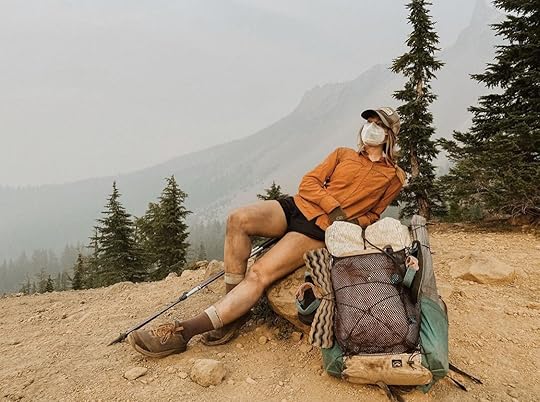
Photo: Astral Designs/ Caylee Reed/@ramblin.rosie
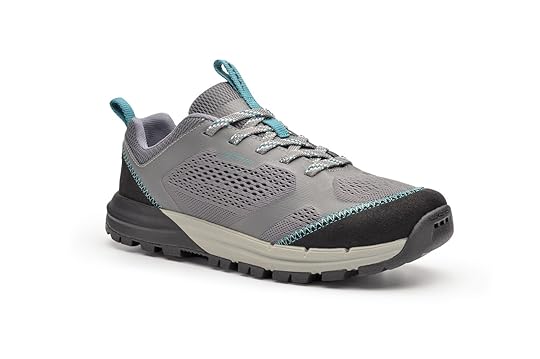
Photo: Astral Designs

Photo: Astral Designs
If you need a quick-drying, ultralight trail shoe, the Astral TR1 Loop is your best option. And I don’t mean that in an “it’s a good trail shoe” kind of way. I mean it is literally the best option. Early Astral shoes were designed specifically for rafters and wet hiking. They’re insanely light, dry out like it’s their job, and have a superior outsole grippy enough for athletes carrying heavy rafts and kayaks to confidently move across steep, slippery rocks. Unless you’re going to hike in sandals (which I actually do recommend, but that’s another story), the Astral is going to be your best bet for trails with stream crossings. And since each shoe weighs only 9.5 ounces, it’s not going to weigh down your foot even when it is wet (though mesh side panels ensure water can’t get trapped inside).
Of the women’s trail shoes on this list, the TR1 probably has the least padding, especially around the ankle cuff and side of the foot. I find them exceedingly comfortable regardless, and thick socks can add padding if you’re the type of person who likes a thick, squishy shoe. I’ve done a few backpacking trips in them, but if you have any type of foot problems, they may not be the best go-to for long, difficult hikes. But they’re versatile — I’ve used mine for road biking on hot days when I don’t want my feet to get too sweaty, as well as for river floating days when my inner-tube could get flipped in small rapids. I’m also rather obsessed with the grippy outsole. Astral describes it as “sticky” and that’s an accurate word. Short of putting sticky fly traps on the bottom of your shoes, you’re not going to get a better grip in wet conditions.
Sizing: Women’s size 6-11, including half sizesGuarantee: Warranty against defects for the “reasonable lifespan of the product”Price: $1255. Salomon Ultra Glide
Photo: Salomon

Photo: Salomon

Photo: Salomon

Photo: Salomon
The Salomon Ultra Glide was one of the first high-end trail shoes I tested recently and it remains one of my favorites. If you look at the profile, you’ll see it has a rockered shape rather than a flat bottom, which mirrors how your foot moves while running and helps you roll off the ground with each step for a little extra boost. They’re lightweight and have a fairly standard fit, but thanks to the brand’s Quicklace system (something I’ve enjoyed for years in their hiking shoes), it’s easy to get a snug fit with even support across the entire top of your foot. They have a lot of cushioning and spring, especially in the heel — so much so, in fact, that you can feel the extra bit of spring even if you’re hiking rather than running. I also really appreciate the variety of fun colors, including orange, purple, and a mint green, though they come in more subtle colors like dark blue. In my experience, Salomon shoes last a long time. I hike probably at least 100 miles a year, some years much more, and my last two pairs lasted a good three or four years each.
Sizing: Women’s size 5-11, including half sizesGuarantee: Two year warranty against manufacturing defectsPrice: $1406. Vasque Sotoru Trail LT Hiker
Photo: Vasque

Photo: Vasque

Photo: Vasque

Photo: Vasque
My final pick goes to the Vasque Sotoru Trail LT Low Hiker. It’s certainly more hiking-focused than running-focused, so I recommend it for hikers who like to do the occasional trail run, rather than runners who only occasionally hike. That said, because it’s quite lightweight and has a lot of rebound (bounce, more or less) from the footbed, it does provide enough support and cushioning for runners. I also like it for the aesthetics. Pair it with jeans and a sweater and you have a great everyday shoe for wearing around town, especially if you opt for the olive color. It’s a versatile shoe that doesn’t seem to sacrifice much — and that goes for the Vibram outsole grip, which manages to keep you steady on the tiniest rock surfaces.
Every single shoe on this list I’ve found to be comfortable right out of the box — in fact, my first hike in all of these shoes was a minimum of six miles — but some users have reported that the Sotoru takes a day or two to break in. That’s to be expected for a stiffer, slightly more hiking-focused shoe, so don’t let that deter you if everything else sounds great. Just don’t make your first hike with them Half Dome, and you should be okay.
Sizing: Women’s size 6-11, including half sizesGuarantee: One year warranty against manufacturing defectsPrice: $150Women’s trail shoe accessories
Photo: REI
Women’s trail shoes should be comfortable since you’re going to be wearing them for hours at a time. In fact, one of the reasons I chose the shoes above is because I find them all comfortable out of the box. But that completely depends on your foot shape, and a little stiffness is to be expected when you first wear them.
But if the discomfort continues, some easy fixes may be a different sock (I like Smartwool’s Performance Hike Light), IceBreaker’s Lifestyle Light Crew Sock, and Darn Tough’s Treeline Ankle Micro Crew socks) or inserting a footbed. I like the Women’s Trailblazer Insole from Superfeet. It’s specifically made for hiking and provides extra cushion for your heel in a way that also stops your toes from mashing against the front of your shoe on the downhill. And sizing is pretty easy since you can trim them yourself with a pair of scissors at home. 
More like thisBackpackingThe Ultimate Summer Backpacking Gear Guide for Newbies
Watch: New Killer Mike Show Explores Cannabis Culture in Four Weed-Loving Cities

For cannabis lovers everywhere, 4/20 is coming quickly. As dispensaries in different parts of the country where recreational cannabis is legal get ready to celebrate the industry’s favorite holiday, anyone who’s ever been interested in the culture may also be interested in a deep dive on cannabis in various cities.
Weedmaps and VICE recently announced a new original cannabis-centric docuseries, called Tumbleweeds with Killer Mike. The show is hosted by rapper and activist Killer Mike, and follows him as he explores the complexity of cannabis in America. Each episode will take a close look at an American city that’s a current epicenter (or will soon be one thanks to changing laws) for legal cannabis consumption: New York, San Francisco, Las Vegas, and Chicago.
“Tumbleweeds has been a fun show to be a part of,” Killer Mike said in a statement. “Getting a chance to smoke a plant my mom and I love, hang out and laugh with hilarious comedians, all while frequenting local businesses and art installations — you’ll never hear me complain about my job!”
After a complicated history with cannabis due to the war on drugs, the substance is now recreationally legal in 18 states and permitted for medical use in 19 more. Tumbleweeds intends to show “the power of entertainment, cannabis, and inclusivity can build community,” according to a press release. Guests on the four-episode series include comedians and celebrities like Jocelyn Chia, Napoleon Emil, Fab 5 Freddy and more — along with cannabis advocate Cherissa Jackson. The docuseries explores all parts of cannabis culture that have touched our society, from dispensaries to restaurants.
The show will premiere the first two episodes on VICE TV< on April 20 at 10 PM ET. These two episodes will be about Las Vegas and San Francisco, with the New York episode premiering on May 1 and the final episode about Chicago on May 8. In addition, Weedmaps, an app that connects cannabis consumers with dispensaries, products, brands, and doctors for medical patients, will offer access to exclusive, bonus content through its mobile app for the duration of the series that will feature the businesses in each episode, products available in their area, and be able to donate to American Veterans directly on the app. "As the original online marketplace for cannabis consumers and businesses, we have always been committed to elevating voices that power the cannabis community, drive social equity, and further legalization," said Juanjo Feijoo, CMO and COO of Weedmaps. "The intersection of comedy, local culture and cannabis is a natural fit as all are driven by shared values of creativity, discovery and connection." [mn-post-ender][readlink readtext="More like this:" title="The 5 Best Cities in the US for a Cannabis-Inspired Vacation" url="https://matadornetwork.com/read/canna..." logo="true"]
Looking To Make a Move? 15 Best States That Make It Cheap and Easy To Work From Home

When the COVID-19 pandemic hit, many businesses were forced to close offices and pivot employees go working from home. And although less restrictive guidelines have prompted many companies to return to the office, some companies have chosen to create a hybrid schedule or let employees work from home permanently. In fact, 20 percent of businesses in the US at the beginning of 2022 were still operating in remote, virtual offices. But not all work from home situations are created equal. WalletHub, a company specializing in financial assistant tools, conducted a study to find the best states for working from home.
The 15 best states to work from homeNew JerseyWashington DCDelawareConnecticutMassachusettsUtahTexasWashingtonMarylandNew YorkTennesseeGeorgiaVirginiaArizonaNevadaThe overall scores are based on from two categories: work environment and living environment. The work environment score was worth 60 out of 100 points. Those 60 points were made up of the share of workers who are working from home or are telecommuters, the household’s internet access, and the quality of cybersecurity. The three states (WalletHub included Washington DC in the ranking as well) with the best work-from-home environment were Washington DC, Deleware, and Massachusetts.
The living environment score, worth 40 points, was based on the price of electricity and internet, the median square footage per number of people living in the house, the share of detached housing units, average home square footage, the share of for-sale homes greater than 1,000 square feet, and the share of for-sale homes with a swimming pool. Texas, Tennessee, and Georgia were the top three states with the best living environment.
Just because you don’t have to move for your job doesn’t mean you shouldn’t consider it. Moving to a new state might save you plenty of dollars and stress. 
Everything You Need To Know About Hiking Aletsch, the Alps’ Largest Glacier

“Have you ever had an accident with any of the people you guide on this glacier?” I asked mountain guide Yvan Volken, after we’d spent three hours exploring Aletsch Glacier – the largest glacier in the Alps. Volken has been guiding people over the massive ice sheet for two decades, and I was expecting to hear a few juicy stories.
“No, never,” he said to my relief – but also disbelief.
We’d just raced over the crevasse-filled wonder, tethered together by a rope attached to harnesses on our waists. At the head of our group, Volken had forged ahead, stepping over chasms so deep you couldn’t see the bottom and taking us over ice bridges no wider than the crampons on our boots. Occasionally, he paused to hack at a steep ice wall with his pickaxe to make it more navigable. But Volken never looked back – except, that is, when someone panicked and called out for him to stop.

Hikers roped together navigating crevasses in the Aletsch Glacier. Photo: Noelle Salmi
That he’d never had an accident guiding this way, struck me as impossible. But it turned out that his hair-raising methods were intentional.
“When you go slow, people don’t pay attention. They look around and take pictures with their phones,” said Volken. When you move at a faster pace over treacherous terrain, people are attuned to the trek, he said. And that makes it safer.
I could see his point. Extending 14 miles down from Switzerland’s Jungfrau Mountain region, the mile-wide behemoth, recognized as part of a UNESCO World Heritage site, was mesmerizing. It offers up bizarre, undulating ice shapes, pools of aquamarine water brighter than precious jewels, and milky vistas that stretch out of sight and reach. The temptation to keep snapping photos was hard to resist.
Yet we were roped together, and staying focused was a must. For one, we needed to keep the correct distance from our fellow hikers. Walk too close and they could trip on the rope; stay too far back, and the taut rope could yank them off balance. The call-outs to stop were when someone felt unsure about stepping over the next black void and had themselves halted, something that could cause the rest of us to fall should Volken keep pushing ahead.
Fortunately, Volken gave us plenty of time over lunch to enjoy the spectacle of the Alps’ largest glacier and take as many photos as we wanted – once we were securely in the center of the glacier in an area mostly devoid of life-threatening crevasses.
The growing and slowing of the Aletsch Glacier
Near a Aletsch Glacier moraine. Photo: Noelle Salmi
The Aletsch brings together three different firns – the snowy parts on the top of glaciers that aren’t pure ice. They’re the Great Aletsch Firn, the Jungfrau Firn, and the Ewig Snowfield. As these glaciers work their way downwards, they scrape along the mountainsides, creating moraines – lines and piles of rocks that land along the edges of the glacier as it moves and recedes. When two glaciers get near one another, the moraines can merge, creating a wide, rocky section between the newly joined glaciers.
Since the Aletsch Glacier combines three glaciers, it has two moraines running through its vertical length, kind of like steel-gray racing stripes. We ate our lunch at one of these moraines, and the views were magnificent – albeit the temperature no less frosty – as the clouds dispersed to reveal a blue sky that contrasted against the ice’s pearly hues.
Unfortunately, as is the case with other famous glaciers around the world, part of witnessing them includes observing how much they’ve receded. As we looked at the bare mountainside flanking the Aletsch Glacier, Volken showed us the widening markers of how tall the glacier had been 30, five, and even one year before.

An aerial view of the glacier. Photo: Jonny Bierman
The Aletsch Glacier grew at quite a clip until about 1860, when it reached its biggest modern-day size. It was about two miles longer than it is now and had residents worried it would overtake their homes and fields. But they needn’t have fretted: the mighty glacier has been slowly subsiding for the last century and a half.
Volken, who grew up in a home that was once next to the glacier but now faces just an empty gorge, said it’s always a shock when he returns every June to start the Aletsch Glacier guiding season. I asked him how the glacier’s shrinking made him feel. He replied that it’s better not to think about it too much, or you’d want to cry.
Heading his advice, I opted to marvel at it instead. The Aletsch Glacier is more than a half-mile thick and encompasses 12 billion tons of ice. Standing in its middle, you can gaze back and see it bending upwards into the mountain peaks. The ice is thickest at the “racing stripes” since it melts slower over the rocky moraines – so much so, in fact, that researchers have contemplated covering the entire glacier with rocks to slow its eventual demise.
How to hike on the Aletsch Glacier
Photo: Aletsch Arena
Fortunately, the glacier is still a breathtaking sight and spending time exploring it is an experience that you won’t soon forget. You can join a day-long hike like the one I did for 90 CHF (US $96) per person, which includes the gondola fare, gear, and guiding services provided by the Bergsteigerzentrum Aletsch (Aletsch mountaineering center). You’ll meet at the base of the Eggishorn Mountain, in the town of Fiesch, Switzerland, at 8:15 AM. Together, the group will take the gondola up to the mid-station to begin the hike.
You’ll hike uphill for about 90 minutes to the Gletscherstube Märjelen (Märjelen hostel). It’s a small hostel where you can grab a coffee and, more importantly, will get fitted for the harnesses and crampons needed to hike the Aletsch Glacier. The hostel used to be much closer to the glacier, but today it’s a quarter-mile uphill from Aletsch.
After about three hours on the glacier, you’ll leave your gear back at the Märjelen hostel and hike back down to the mid-station at Fiescheralp. I made use of my trekking poles on the way down, though Volken came up with a more fun way to head back down: he brought his mountain bike up with him to ride back down, giving his knees a break.
If you want to spend more time on the glacier, there’s a two-day 350 CHF ($375) excursion. The first day starts the same, but hikers will spend the afternoon trekking toward the mouth of a massive ice river at Konkordia. Two-day trekkers will sleep at the Konkordia hut and wake up for sunrise on the Aletsch Glacier before hiking back to the Märjelen hostel.
Other ways to see the Aletsch Glacier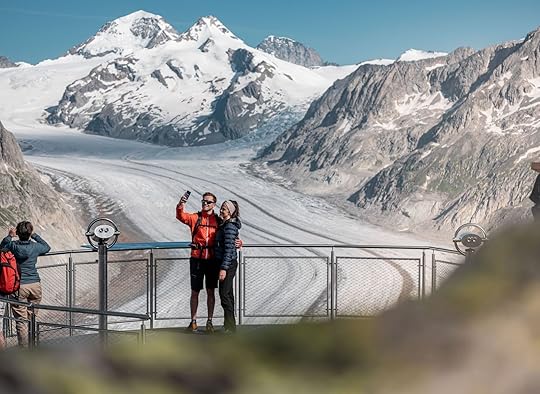
The gondola-accessible lookout point. Photo: Aletsch Arena
There are still ways to admire the Aletsch Glacier, even if you don’t have the time or stamina for a trek. You could take the gondola to the Eggishorn (instead of exiting at the mid-station) and walk to an overlook. For a more exciting view, go with Bergsteigerzentrum Aletsch on the 85 CHF ($91) via ferrata tour. On the route, you’ll have spellbinding vistas of the Valais’s tallest peaks and the Aletsch Glacier.
Alternatively, you could take the Jungfrau Railway up to the Jungfrauhoch, the highest railway station in Europe at a dizzying height of 11,332 feet above sea level. It’s a pricey ride, coming in at 95 CHF ($101), but you’ll get a 25 percent discount if you’ve got a Swiss Travel Pass. From there, you’ll be between the mountains of the Bern and Valais cantons (Swiss states), looking down at the Aletsch Glacier.
Lodging and when to goUnless you want to wake up really early, you’ll want to stay near Eggishorn Mountain. We stayed at the Hotel Eggishorn in Fiescheralp. In winter, the Hotel Eggishorn and two other inns located at Fiescheralp serve skiers and snowboarders, but in warmer months, these cozy accommodations host hikers and mountain bikers.
We were there in September, which offered the cooler temperatures of early autumn without the blanket of snow Switzerland’s Valais region is known for. The Valais is home not only to the Alps’ largest glacier but to the vast majority of Switzerland’s tallest mountains. It boasts 41 of the country’s 48 peaks that top out above 4000 meters (13,123 feet). That includes the 15,203-foot Monte Rosa and the iconic Matterhorn. If you’re planning to hike, camp, or backpack, you’ll need to visit between early June and the middle of October. Before and after that, most huts and hotels close for a week or two to transition between summer and winter services.
And when you’re finished trekking for the day? Well, you’re in luck when it comes to food and wine as the Valais produces one-third of Switzerland’s wine and, with both German and French culinary influences, some of its best foods. All of this means that you can savor your post-glacier day with what is certain to be a good meal: perhaps a savory plate of pasta, a glass of Valais pinot noir, and some luscious Swiss chocolate. You can talk about your day and maybe even look at all the photos you took on the glacier – but only when you were safely stopped, of course. 
More like thisWinter SportsIceland’s Ice Caves Could Last for Decades — or Be Gone Next Month. Here’s How To See Them.
The Most Popular (Non-Chain) Burrito Restaurant in Every State

When you love Mexican food, any time of day is the right time for a burrito. But if you need another excuse to dig into this beloved and widely popular dish, April 7 is National Burrito Day. In honor of the occasion, Google Maps compiled a near comprehensive list of the most popular burrito restaurants and chains across the United States, as well as local and Latino-owned favorites in every state.
The survey yielded some information that might not be surprising: First off, Chipotle, Qdoba, and Moe’s are the top three most popular burrito chains in the US. However, there are nine states – Alaska, Arizona, Arkansas, California, Hawaii, Idaho, Nebraska, and Nevada – that, according to the Google Maps data, “have local or regional burrito chains that rank first as the most popular burrito option over Chipotle, Qdoba, or Moe’s.”
As for where to go to find the most burrito restaurants per capita in the country? That would be Texas, home to some legendary Tex-Mex cuisine. Not only should burrito enthusiasts be sure to make their way to Texas, but there are also several other states where Mexican food is among the most popular cuisines. The top 5 burrito-loving states, according to Google Maps, are Colorado, Oregon, New Mexico, Illinois, and California.
The data doesn’t stop there though. As anyone who truly loves Mexican food should already know, the best burritos don’t come from chains, but from locally owned and family operated spots. That’s why Google maps compiled a list of the “top-searched, non-chain, Mexican and burrito restaurants that serve burritos in each state.”
The list includes Taqueria Downtown in Jersey City, New Jersey; Guerrero Maya in Portland, Maine; and Que Pasa Cantina in Rapid City, South Dakota. Here’s the full list so you check out which burrito spot made the rankings for your state – and hopefully stop by to sample the menu on National Burrito Day:
Alabama: El Barrio – Birmingham, ALAlaska: El Dorado Mexican Restaurant – Anchorage, AKArizona: Centrico – Phoenix, AZArkansas: Los Ruvalcaba Mexican Restaurant – Texarkana, ARCalifornia: La Puerta – San Diego, CAColorado: La Loma – Denver, COConnecticut: Agave Grill – Hartford, CTDelaware: Atexquita Restaurant Mexican Grill & Bar – Newark, DEDistrict of Columbia: Oyamel Cocina Mexicana – Washington, DCFlorida: Dulce Vida Mexican Restaurant – Miami, FLGeorgia: No Mas! Cantina – Atlanta, GAHawaii: Oahu Mexican Grill (OMG) – Honolulu, HIIdaho: Barrigas Mexican Restaurant – Boise, IDIllinois: Barrio – Chicago, ILIndiana: Loco Mexican Restaurant and Cantina – Indianapolis, INIowa: Cancun Grill and Cantina – Urbandale, IAKansas: El Fogon – Overland Park, KSKentucky: FOKO – Louisville, KYLouisiana: Tacos & Beer – New Orleans, LAMaine: Guerrero Maya – Portland, MEMaryland: Daily Special Authentic Mexican Grill – Baltimore, MDMassachusetts: Maria’s Taqueria – Boston, MAMichigan: Mexican Fiesta Express – Howell, MIMinnesota: My tacos and Groceries – Richfield, MNMississippi: TACO FELIX 2 – Southaven, MSMissouri: Mas Tequila Cantina – St. Louis, MOMontana: Ramires Mexican Food – Bozeman, MTNebraska: El Chaparro – Lincoln, NENevada: El Dorado Cantina – Las Vegas, NVNew Hampshire: El Charro – Lincoln, NHNew Jersey: Taqueria Downtown – Jersey City, New JerseyNew Mexico: The Jealous Fork – Albuquerque, NMNew York: Amigo by Nai – New York, NYNorth Carolina: San Jose Tacos & Tequila – Raleigh, NCNorth Dakota: Vinyl Taco – Sioux Falls, NDOhio: Fiesta Tropicana – Lancaster, OHOklahoma: Elote Cafe & Catering – Tulsa, OKOregon: Victorico’s Mexican Food – Hillsboro, ORPennsylvania: El Vez – Philadelphia, PARhode Island: Caliente Mexican Grill – Kingston, RISouth Carolina: Taqueria Rocio – Ridgleand, SCSouth Dakota: Que Pasa Cantina – Rapid City, SDTennessee: Cerveza Jack’s – Nashville, TNTexas: Mi Tierra Cafe y Panaderia – San Antonio, TXUtah: Red Iguana – Salt Lake City, UTVermont: Gringo Jacks – Manchester Center, VTVirginia:Tacos Los Primos – Arlington, VAWashington: Fogón Cocina Mexicana – Seattle, WAWest Virginia: Mi Degollado Mexican Restaurant – Charles Town, WVWisconsin: Margarita’s of Green Bay – Green Bay, WIWyoming: Corona Village – Laramie, WY 
Matador Network's Blog
- Matador Network's profile
- 6 followers



